




































Publisher: David Harrison
d.harrison@spacehouse.co.uk
01625 614 000
Partnering with air quality experts Vortex gave the council a detailed view of air pollution which led to targeted environmental action.
Editor: Martin Guttridge-Hewitt ej@spacehouse.co.uk
Result: Improved air quality by 50% and reduced carbon emissions by 1 tonne a day.
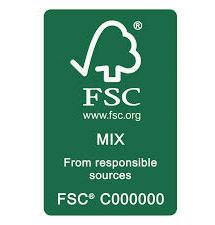
01625 614 000
Business Development Manager: Jason Coward jason@spacehouse.co.uk


07889 212 414
Finance Manager: Jenny Leach jenny@spacehouse.co.uk
01625 614 000
Located in the southwest of London, with over 185,000 residents and several major corporations headquartered in the borough, The London Borough of Hammersmith & Fulham (LBHF) is committed to improving air quality for residents through positive sustainability changes, making effective decisions in the right locations and measuring success with accurate data collected from hyper-local, low cost, air quality sensors with street-level accuracy.
Administration:
Susanne Lingham office@spacehouse.co.uk
01625 614 000
LBHF became the first borough to declare a climate emergency in July 2020, pledging to resolve an air pollution and traffic congestion problem and addressing the 80% of congestion attributed to vehicles originating outside the Borough.
Published 6 times a year
published by Spacehouse Ltd, Pierce House, Pierce Street, Macclesfield. SK11 6EX.
Tel: 01625 614 000
All change, please. Or something like that. This the first issue of AirQualityNews in 2023, and a new calendar brings about so many fresh possibilities. We explore some of them in our latest special report on transport.
The future of flight is one example. As Georgie Hughes investigates, scientists are slowly making inroads on the path to answering one of the biggest obstacles to the world turning net zero — sustainable and low carbon aviation fuel. Sadly, though, the path remains fraught with turbulence.
Problems caused by high traffic volumes became the largest contributors of air pollution in the borough, compounded by regular use of streets as a thoroughfare for vehicles originating outside the borough. The council wanted a method to measure the results and prove the effectiveness of the restriction zones to residents. Traditional air quality solutions available to Hammersmith & Fulham would not be sufficient in measuring air quality variations at the required frequency and density. LBHF needed spatial and temporal information with sufficient granularity to measure air quality changes at a per-road level, to review traffic interventions and prove their success in reducing pollution with an easy to deploy, affordable and detailed analysis of air quality per street.
Elsewhere, we ground ourselves with a dive into Oxford’s cutting edge EV technologies. The city, already renowned across the world as an innovation centre, is trialling various prototypes that could help plug-in vehicles become a possibility for more people, not least those living in terraced houses with no driveway. This corner of England is now home to Europe’s largest vehicle charging hub, too, which we also examine.
Our international feature hones in on innovations from the Netherlands facilitating air quality measuring on bicycles. Suffice to say, this has major implications for the quality and quantity of data available about what we’re breathing in. But sadly, albeit unsurprisingly, it’s not all good news ahead.
Check the legal pages for the stiff battle unfolding between South Lakes Action On Climate Change and the UK government following the hugely controversial decision to grant planning permission for West Cumbria Mining to construct a new coal mine in the northern county. Emily Whitehouse considers how community bodies can raise funds to take on large organisations in cases like this, the risks, potential outcomes, and projected environmental impact if the facility is eventually built.
Vortex provided a low-cost air quality monitoring solution that enabled the deployment of a dense network of hyper-local air quality sensors to provide real time air quality data to the council. The sensors are all SIM card free and connected wirelessly through a mesh network that’s driven by artificial intelligence and machine learning configurations. Implementing this technology allows the system to identify and execute calibrations and updates remotely, reducing LBHF’s on-site resource costs.
Thankfully, those considering similar campaigns can rely on the advice of globally recognised behavioural and communication experts this month. Three feature in our in-depth look how public messaging — from health to the environment — should be approached to stand a better chance at engagement and mobilisation.
Starting as we mean to go on, we’re delighted to open this year’s scoring with such a packed contents list. We hope you enjoy reading as much as we loved putting these pages together, thanks as ever for your support.
Air Quality Monitoring within the council’s budget requirements
Street-Level data accuracy of Air Pollution

All rights reserved. Reproduction, in whole or part without written permission is strictly prohibited.
Unprecedented Coverage – World’s densest deployment

Detailed analysis of their entire constituency
Public access to data on their neighbourhood
Lifetime warranty
Martin Guttridge-Hewitt, Editor Tel: 01625 614 000
ej@spacehouse.co.uk
VTX Air has identified high pollution transmission points that were previously unknown. As a result, LBHF’s award winning Traffic Congestion and Pollution Reduction Scheme has reduced carbon emissions by 1 tonne a day and improved air quality by 50% for residents. Using the technology, the public have been able to see their air quality through a publicly available portal to better understand the impact that the Scheme is having on their health. The key benefit for LBHF was identifying where the pollution is originating and understanding the sources of pollution that are generated inside the borough.
LBHF’s installation will further its dense concentration and become the largest scale air quality monitoring network in Europe with a total of 500 sensors deployed before the end of the year.
We needed a system that allowed us to recognise subtle changes in local pollution relating to traffic behaviour. When searching, we found traditional monitors to be far too expensive to install in the density required to see the changes.”
John Galsworthy Director, Parking, London Borough of Hammersmith & Fulham.
We are connecting the dots of a new mobility revolution that is transforming our towns and cities.
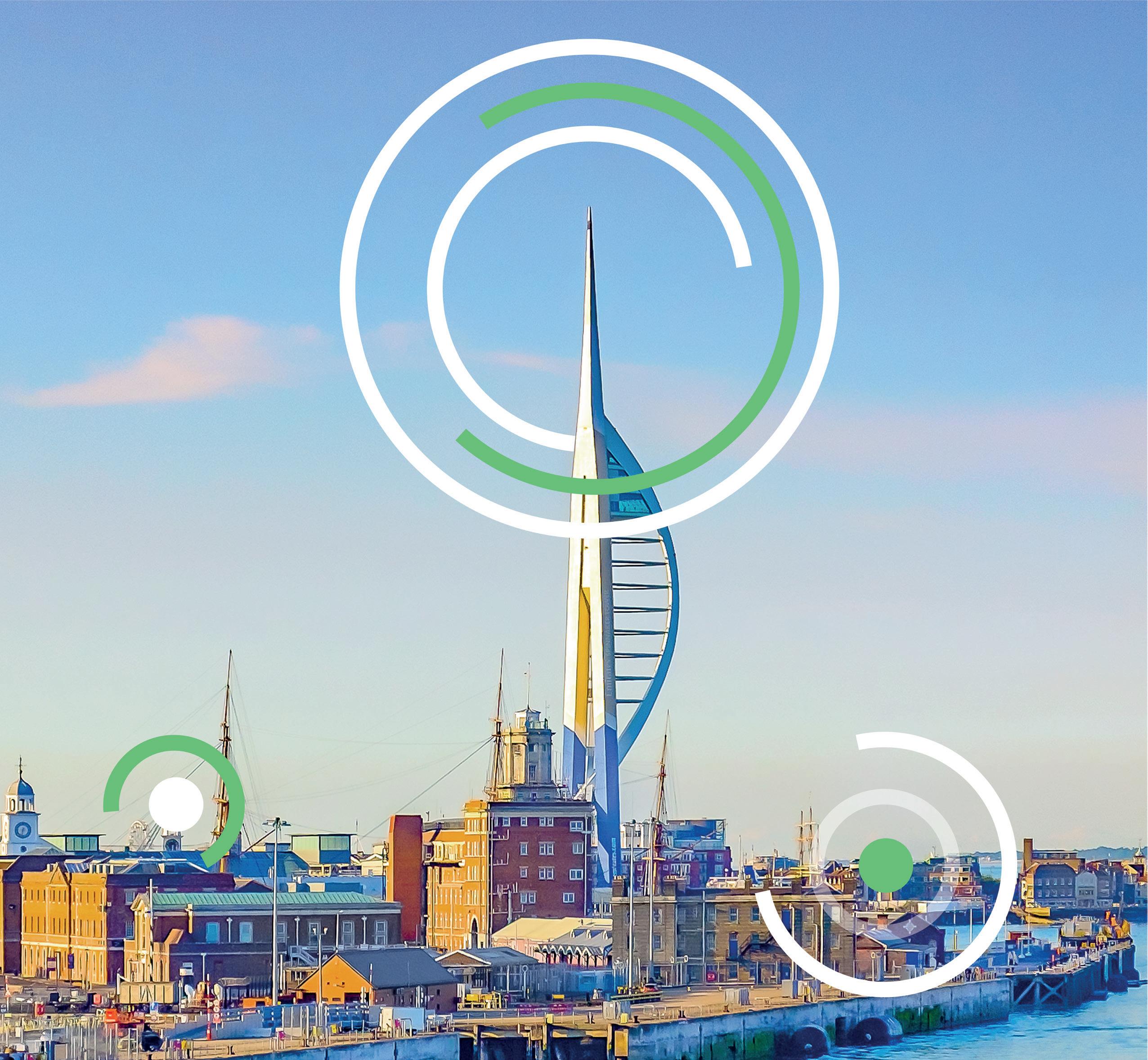
With the broadest end-to-end portfolio of intelligent traffic management solutions, we work with cities, highway authorities and mobility
www.yunextraffic.com/uk
operators to make their road networks and fleets intelligent, enhance road safety and improve air quality.
It’s time to make the world a better place. We are ready. Are you?
Pages 6-8 News: No major new funding as UK abandons recommended air pollution targets
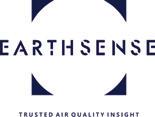



Pages 10-12 Feature: Talking cleaner transport: The science of
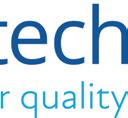
Pages 18-19 Special Report:
The battle of Whitehaven: Can community mobilisation beat central government?
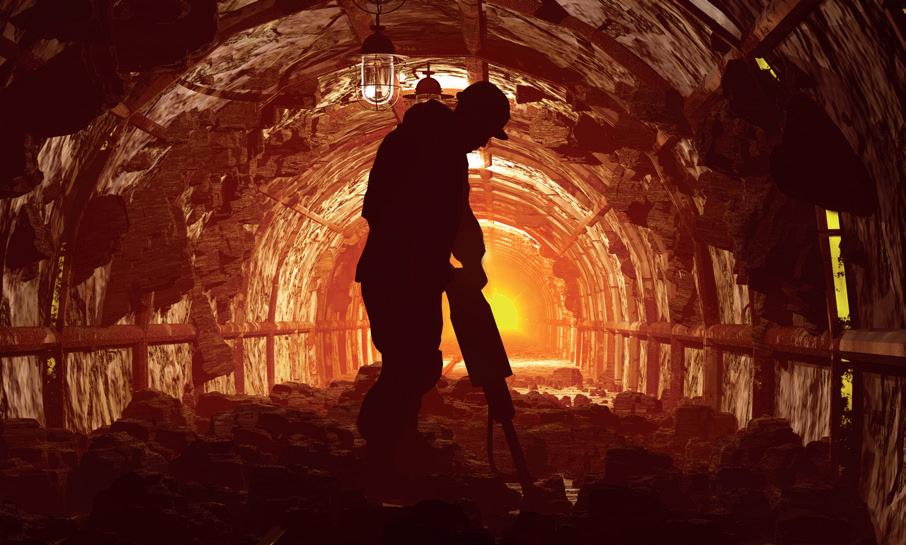
Contents
News:
Pages 6-8
Pages 10-12 Feature: Talking cleaner transport: The science of effective public messaging
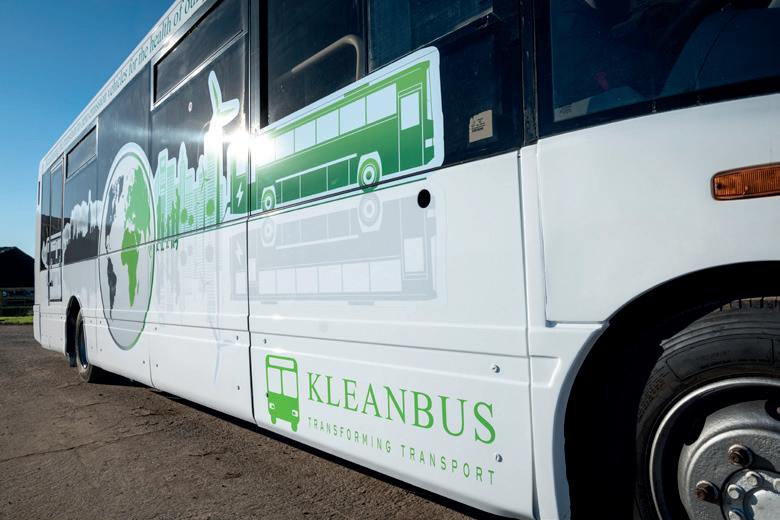
Pages 14-17 Special Report: Can aviation ever be truly sustainable?

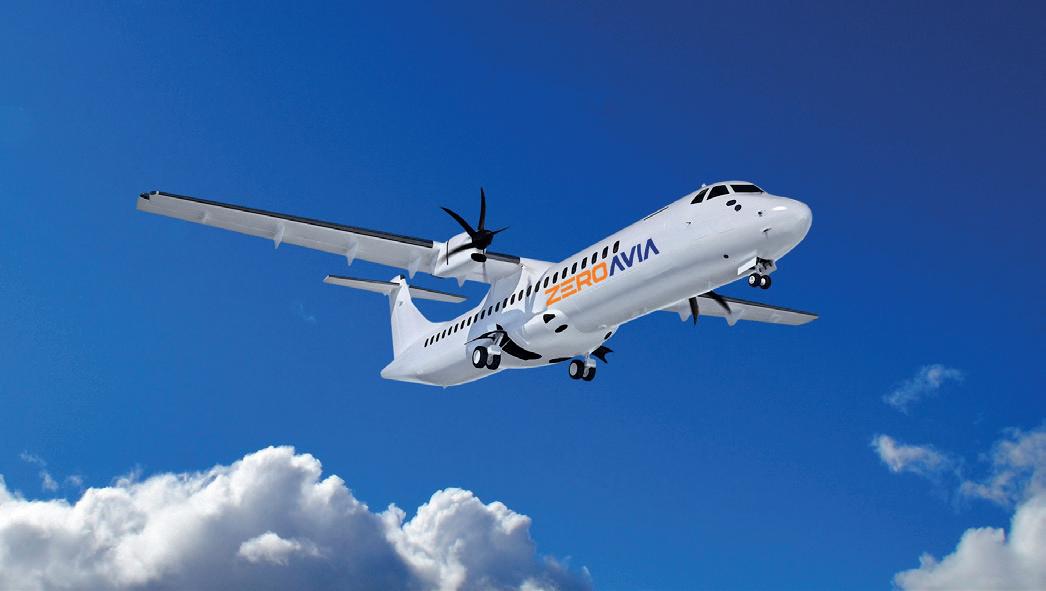
Pages 18-19 Special Report: Intelligent infrastructure: Inside the UK’s centre of EV innovation



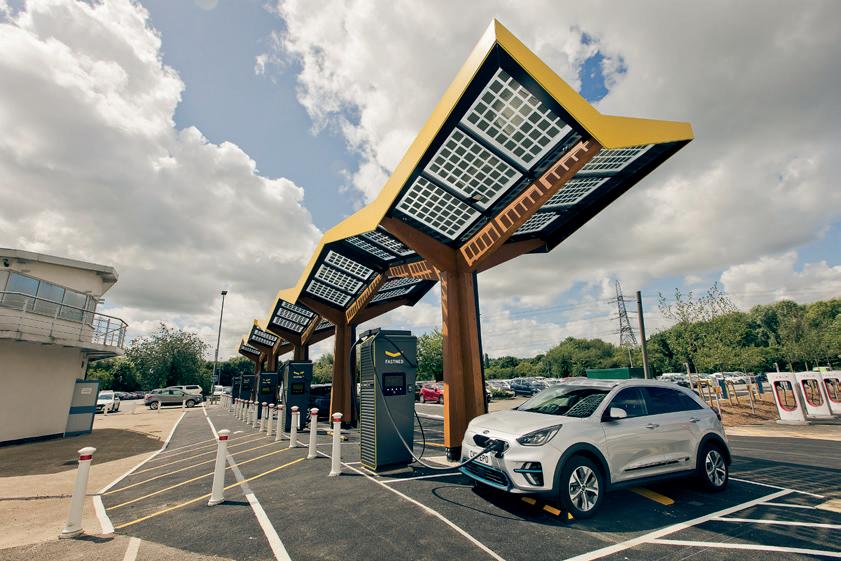
Pages 21-22 Special Report : Inside the e-scooter revolution
Pages 24-25 The Big Interview: Lucy Parkin, Kleanbus Director of Environmental, Social & Governance
Pages 26-27 International: People power: How citizens can help to reach air quality targets

Pages 28-29 Local Government: Exclusive report: What CANZ be done?

Pages 31-32 Legal: The battle of Whitehaven: Can community mobilisation beat central government?
Pages 33 Marketplace:

Thanks to our contributors:

Cllr Louise Upton
Jason Torance
Lucy Parkin
Miriam Gradel
Pages 21-22 Special Report: Inside the e-scooter revolution
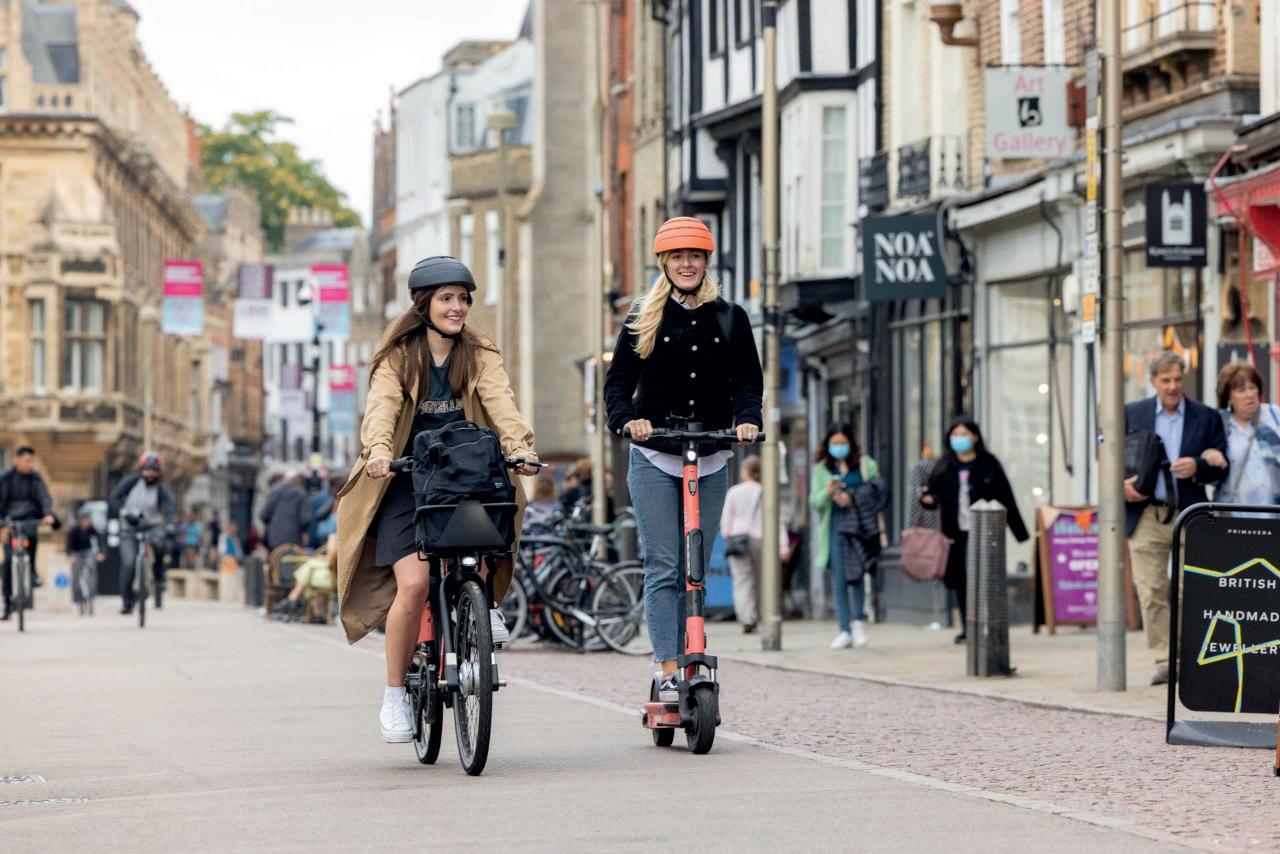
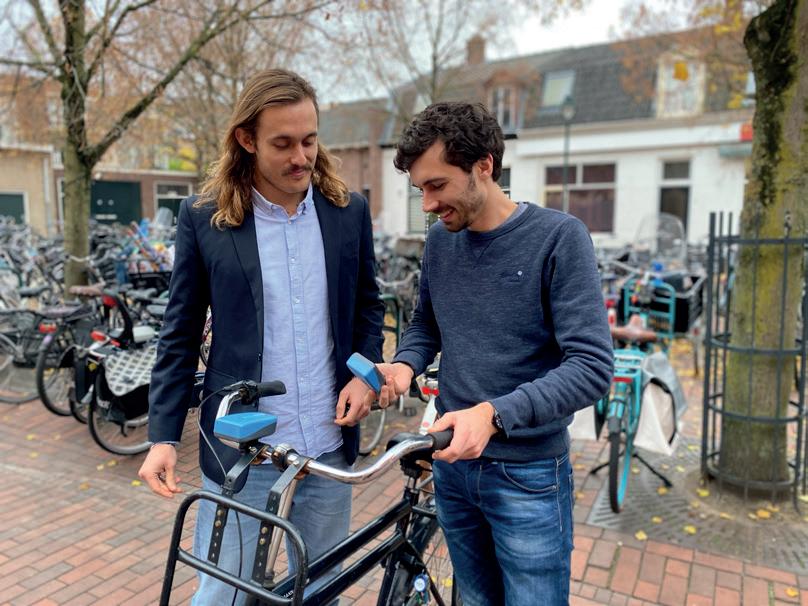
London air quality hits six year low amid cost of living crisis
London’s worst air pollution crisis since January 2017 saw the city’s southwestern suburbs suffer the most, with an analysis of the chemical composition of emissions revealing domestic wood and solid fuel burning was a major cause – contributing between 60 and 70% of the soot particles.
L ast year, Air Quality News reported on a significant increase in online searches for wood burning stoves and sales of logs as Britons began looking for alternatives to central heating in a bid to avoid rocketing energy bills. Cost-of-living pressures have contributed to domestic budgets – food inflation has hit its highest level since 2008.
News that London’s air pollution levels have reached their highest in more than half a decade paints a picture of ineffective policies designed to prevent such increases.
Last year, we revealed London councils issued zero fines for the use of wood-burning stoves despite most of the city being designated a Smoke Controlled Area.
New government competition could see net-zero ships by 2025
The government has launched a new competition to try to find green maritime solutions, with aims for winning projects to launch vessels by 2025. Combined with a £77m investment in clean maritime technology, this is the first time the government has targeted funding in this sector. S olutions could resemble boats powered by electric batteries, shoreside electrical power, ships running on low-carbon fuel like hydrogen, or ferries powered by the wind.
Transport Secretary Mark Harper said: ‘When it comes to tackling climate change, we are taking action on all transport modes, which is why we’re making sure our world-leading maritime sector has a greener future. ‘This multi-million-pound investment will help the latest tech ideas become reality and ensure UK waters will play host to green cargo ships, ferries and cruises in the next few years.’
The Zero Emissions Vessels and Infrastructure competition will be run by Innovate UK which has overseen similar competitions in different industries.
Downing Street’s 262-page Environmental Investment Plan (EIP), published this month, contains no commitments to increase funding for most environmental issues, including air quality, as bar is set lower than leading health experts advised.
already enjoy this, but the evidence shows us that with the best will in the world we cannot achieve that everywhere by the end of the decade, particularly in London,’ Coffey said.
At the time of writing, Coffey has ruled out a ban on wood burning stoves in favour of tighter regulations around their use, especially in Smoke Control Areas.
Following the publication of the document, Environment Secretary Thérèse Coffey issued a statement about the need to manage expectations, and in turn setting UK’s limits on air pollution for the next ten years at a higher level than bodies such as the World Health Organisation have

recommended. This comes after an air pollution warning spanning several days was issued for London.
‘We have cleaner air. I want it to be even cleaner. Now, I would have loved to have made our target to achieve 10 micrograms [of PM2.5, per cubic metre of air] by 2030, not 2040. Many parts of the country
‘The Environmental Improvement Plan sets out the government’s approach to delivering our long-term environmental targets and wider green commitments. However, it’s important to consider the EIP in the context of environmental targets that lacked ambition in the first place,’ said Sarah Mukherjee MBE, CEO of the Institute of Environmental Management and Assessment (IEMA).
Nearly a third of electric vehicle (EV) chargers are based in London, according to new government figures, highlighting a north-south divide.
Since January 2022, data from the Department for Transport (DfT) shows there has been a 31% increase in EV chargers across the UK, with 8,680 installed throughout the year. However, most of these appear to be concentrated in London, with the North West and Northern Ireland continuing to have the least amount of chargers in the country.
Based on data from EV charge point platform ZapMap, London now has 131 devices available per 100,000 people, while there are just 31 and 19 in the North West and Northern Ireland respectively.
Recent research also shows that London doesn’t have the largest share of EV’s in the country, with just 9% of plug-in vehicles licenced here, whereas
the North West is home to 13%.
The UK has aims for 300,000 publicly available chargepoints to be installed by 2030, but currently 37,055 are in place, just over 10% of the government’s goal. Air Quality News reported on the lack of EV infrastructure outside of London and funding difficulties for councils back in October. A spokesperson for the
Local Government Association (LGA), which represents 350 councils in England and Wales, told the BBC that funding for EV infrastructure isn’t all that’s needed.
‘Investment in cleaner and better bus networks and safer cycling and walking infrastructure’ is also vital, according to the organisation.
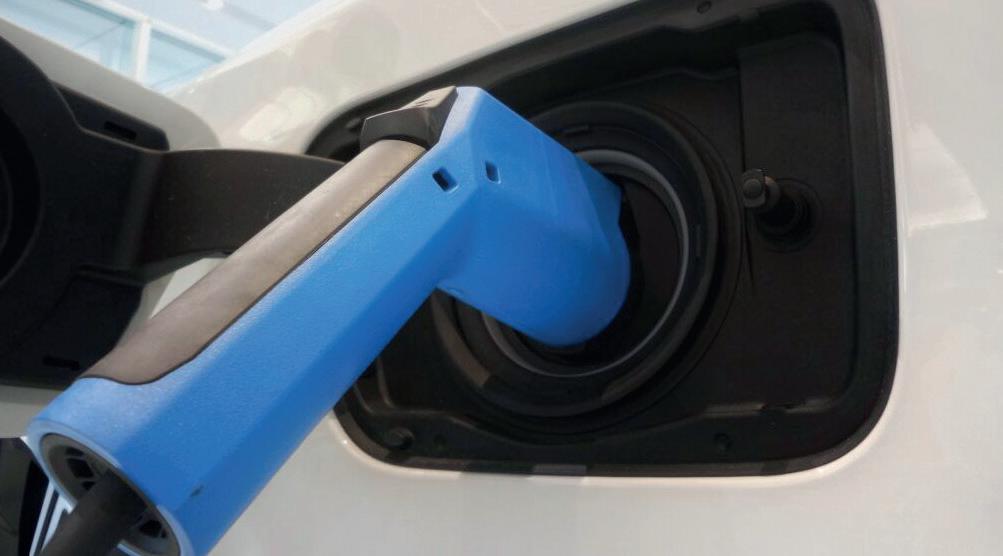

Tackling air quality and net zero together may be the most effective solution, says a new report by UK100, which highlights the benefits of the Clean Air and Net Zero (CANZ) method.
Birmingham, Camden, Hertfordshire, Leeds and Nottingham are leading the way, according to the What CANZ be done? report published by the cross-party network of local leaders. According to the CANZ concept, similar actions can resolve both issues, as net zero policies can account for clean air policies and vice versa.
UK100 says this approach can support a shift away from private car use, empower communities to make informed decisions with data transparency, and work with agriculture to reduce emissions.
Jason Torrance, Interim Chief Executive of UK100, said: ‘Aligning Clean air and Net Zero (CANZ) isn’t pie in the sky — local authority leaders from Birmingham to Wiltshire
are already taking ambitious and joined-up action to great effect.’ The organisation has called on Defra to consider its recommendations and agree to a meeting with local leaders who are already finding success with the CANZ approach.
Several councils were highlighted as examples in the report, with Birmingham’s Clean Air Zone (CAZ), one of the first to be implemented in
the UK, receiving a mention.
Local leaders also recommended a government mandate on local climate action, with statutory progress reports, and an integrated policy and regulation on air pollution and climate. They also suggested long-term devolved funding should be made available to avoid the difficulties associated with short-term, competitive pots of funding.
Government figures of overall greenhouse gas emissions in the UK may be much higher than first thought, according to a new report.
sector, we need to work with industry to develop practical, effective, and collaborative measurement strategies.’
The news follows damning evidence revealed last year that overall greenhouse gas emissions may be treble government figures.
Additional grants for Bradford Clean Air Zone HGVs and coaches
Assistance is scheduled to upgrade the largest types of vehicles in Bradford via a new Clean Air Heavy Duty Vehicle Grant Programme with £1.1m of funding.
The idea is to facilitate smaller sized businesses to allow their fleets to meet the Clean Air Zone minimum standards for emissions. Those eligible can now apply for up to £16K of funding towards replacement models or retrofit work. This is limited to one vehicle per application, but multiple applications can be submitted by a single organisation.
Those interested have been warned that cash is ‘extremely limited’ and therefore the system is being run on a first come, first served basis.
‘We are pleased to extend our support to Bradford businesses for the upgrade of their non-compliant vehicles by offering up to £16,000 per vehicle in grant funding for HGV’s or coaches’, said Cllr Sarah Ferriby, Bradford Council’s Executive Member for Healthy People and Places.
EU accused of ‘exporting environmental damage’ east Researchers have found the environmental impact of European Union member states is felt the most outside the bloc.
However, much of the economic benefits linked to consumer goods and services is kept within the EU.
Researchers at the Universities of Birmingham (UK), Groningen (NL), Maryland (US) and the Chinese Academy of Sciences investigated the topic in a new study.
Scientists from Princeton and Colorado State University suggest the country’s current model for calculating methane emissions from offshore oil and gas industries can lead to dramatically lower readings.
In fact, rigorous examination of the UK’s testing process shows levels of emissions may be up to five times higher than official numbers show.
‘Methane emissions from offshore facilities are currently largely uncertain, and because sources on facilities only emit for a short time period, using direct survey methods such as satellite or drones will probably only capture about 25% of the actual emissions,’ said Stuart Riddick, lead author and research scientist at Colorado State University.
‘To generate representative baseline emissions across the
As the UK isn’t the only nation to measure emissions in this way, it’s highly likely that similar levels of underreporting are evident across the world.
Last year, Climate Trace reported that emissions from oil and gas facilities globally were likely to be underreported by around one-third. Meanwhile, the International Energy Agency (IEA) warned in March 2022 that its Global Methane Tracker pointed to emissions from oil, gas and coal being around 70% higher than official reports claimed.

They looked at 10 environmental indicators between 1995 and 2019 –ecotoxicity, greenhouse gas emissions, particulate matter, photochemical oxidation and biodiversity loss.
Seven – including ecotoxicity indicators, greenhouse gas emissions, particulate matter formation and photochemical oxidation– had increased notably in Eastern European countries outside the EU which falling within the bloc itself.
‘For the sake of our planet, environmental pressures and impacts from EU consumption need to decrease substantially – reducing the export of environmental damage beyond the borders of the wealthy EU states to poorer regions,’ said corresponding author Yuli Shan from the University of Birmingham.
Newcastle’s Clean Air Zone comes into action
Highly polluting vehicles will now face charges after Newcastle’s Clean Air Zone (CAZ) launched on January 30th.
Non-compliant taxis, buses, coaches and lorries entering the city centre will be charged between £12.50 and £50 a day from now on. Private cars, motorbikes and any other vehicles which meet emission standards will not face a penalty.
The zone, covering the city centre and routes across the Tyne, Swing, High Level and Redheugh bridges, was created in response to a government legal order to tackle high levels of nitrogen dioxide in certain areas.
Newcastle follows in the footsteps of several successful CAZ schemes, including initiatives in Birmingham, Bradford and London. Birmingham’s CAZ saw nitrogen dioxide levels decrease by 13% decrease in nitrogen dioxide levels within the first year.
Initially, there were plans for private cars to be charged and for tolls to be introduced on bridges, but these were abandoned following the results of a 2019 consultation.
Air pollution causes dry soil to release carbon
High levels of nitrogen cause dry soil to release carbon it has been storing, contributing to the climate crisis, a study has found.
Nitrogen rates in the atmosphere have tripled since 1850 due to cars, industrial processes and fertilisers. Now, scientists have investigated whether this affects soil’s ability to store carbon.
While nitrogen can be used to promote plant growth, allowing for carbon storage, they found that in dryland areas it causes soil to acidify. As the soil acidifies, the soil attempts to rebalance the pH scale by releasing calcium which binds to carbon.
This means that some carbon is also lost. ‘Air pollution generated by fossil fuel combustion has an impact on many things, including human health by causing asthma,’ Peter Homyak, study co-author, said. ‘It can also impact the amount of carbon these dryland systems can store for us. For many reasons, we have to get a handle on air pollution.’

Launched by non-profits Global Action Plan, and Impact on Urban Health, a new information page has been published to raise awareness of the negative impacts of wood burners.
affects some of the most vulnerable people in our communities, including children. Wood burning is a major source of fine particulate matter, which is one of the most harmful pollutants, yet people’s awareness of this impact is low. This is a significant barrier to reducing it.
Wood burners are known to emit PM2.5 which can cause illnesses such as asthma, coronary heart disease and lung cancer and even homes with ‘eco’ burners are three times more polluted than those without.
Still, woodburning stoves remain popular, with a 60% rise in sales of firewood reported in September, suggesting that people
may be unaware of the health impacts.
Although burners are used as a primary source of heat, there is a small minority of 8% of people doing so for ‘aesthetics’ or ‘nostalgia’ reasons.
Rachel Pidgeon, Portfolio Manager at Impact on Urban Health, said: ‘Air pollution has devastating effects on people’s health and disproportionately
‘Educating people about the link between wood burning, pollution and health without judgement is an essential step towards behaviour change and ultimately regulation as well as support to transition to other energy sources for those who need it.’
As well as a detailed information page, the two charities collaborated with Dog Cat & Mouse and JAA Media on a digital strategy which targets Londoners who already own or are likely to buy a wood burner.
A new free resource has been produced aimed at helping councils get the full potential out of tree planting projects, which have been proven to reduce urban temperatures and improve air quality.
Created by the Association of Directors of Environment, Economy, Planning & Transport (ADEPT) and the Rees Jeffeys Road Fund, The Value of Trees toolkit contains information on species selection, guidance’s on planting processes and maintenance.
Leicestershire County Council has also been involved in the work, which features a tree valuation matrix. This essentially rates different types of trees that are available to UK authorities, based on various impacts and outcomes. These include carbon storage and sequestration, flood management and air pollution removal.
‘Local authorities are planting trees as part of their plans to accelerate woodland creation and support their climate change

agendas, but we are concerned about challenges that may be presented by diseases such as ash dieback,’ said Mark Kemp, President of ADEPT. ‘ADEPT wanted to measure the impact of ash dieback on local authorities and develop support for local authorities across the country, so we commissioned the Value of Trees project. We wanted to develop a considered strategy to
delivering ecosystem services and create a consistent, evidence-based approach.’
‘The Value of Trees work is a further step in the right direction towards a future with trees that are thriving and delivering multiple benefits for Leicestershire residents,’ added Cllr Blake Pain, lead member for the environment and the green agenda at Leicestershire County Council.
Pinpoint emissions sources and identify how communities are exposed to fine particulate matter from domestic woodburning with live Zephyr® data, high resolution MappAir® models and source apportionment capabilities.


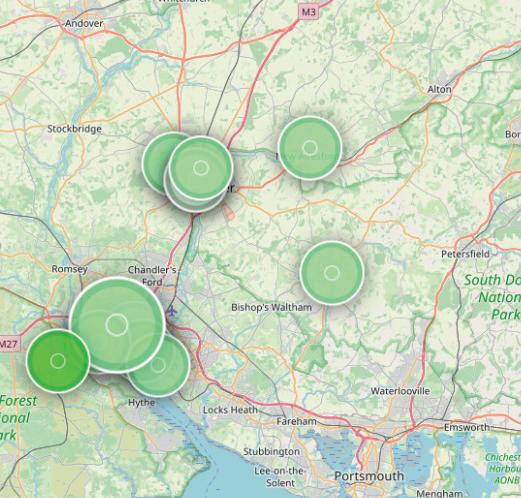
Engage with the public, share guidance and encourage behavioural change initiatives to steer decisions away from household burning using public air quality portals.

Mounting evidence to show people are increasingly onside with environmental measures contrasts the difficulty authorities face mobilising change on the ground. Looking to behavioural experts, Martin Guttridge-Hewitt seeks advice on winning support for green policies and initiatives.
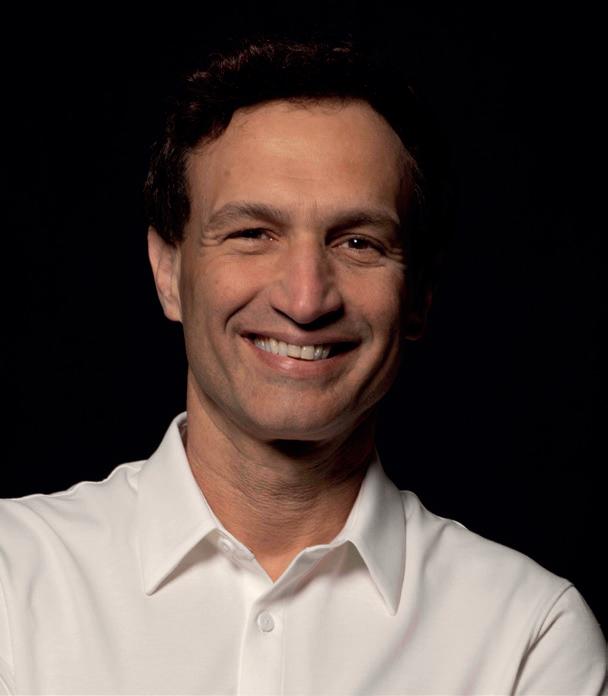
When Air Quality News published its investigation into Greater Manchester’s ill-fated Clean Air Zone in February last year, several things were clear about failed efforts to introduce vehicle payments in the UK’s second largest regional economy. A disconnect between central and local governments, including a shortfall in scrappage and upgrade funds, caused problems. But the fatal blow arguably came through misinformation, confusion, and lack of clarity about proposals.
So how can local authorities communicate with the public effectively? We have seen, time and again, how difficult it can be to win the battle for hearts and minds, especially when you’re talking about invisible, hidden, or future threats like air pollution, emissions, and climate change. Nevertheless, strong
evidence exists that growing numbers of people are onside.

According to the United Nations Development Programme’s 2021 survey on global attitudes towards climate change,
Vote – the largest single study of opinion on this issue ever conducted – 64% of all respondents see climate change as a worldwide threat. But harnessing that awareness in a way that mobilises change still presents an enormous challenge for those tasked with promoting policies and schemes.
That problem is compounded when we move beyond behavioural adaptation alone and ask people to make what they may consider a lifestyle or economic sacrifice. For example, paying to drive in Manchester, or ditching cars altogether in favour of public transport.
Kate Stanley is Executive Director of Frameworks UK, a non-profit communication organisation working with charities, foundations, and other mission-focused organisations to help them talk about issues with the public in ways that support change.

Established just over two years ago as the British arm of Frameworks Institute, based in Washington DC, since inception the relatively new British team has helped the likes of Joseph Roundtree Foundation, Welcome Foundation, Royal Foundation, national public health bodies and local authorities to communicate more effectively.
‘I would probably start by thinking about the dominant mindsets or ways of thinking that people tend to bring to the big social and economic issues,’ Stanley replies when asked how
organisations can create greater impact with campaigns. ‘How does the public, in Britain or an area, tend to feel about the subject? And for what reason? Once you know the answer to that question, you can avoid most mistakes because you know what your message is landing into.
‘This is about more than large populations. You need to understand what every segment thinks to avoid the big challenges. One of the mindsets we find causes issue, across different areas, is the idea of individualism,’ she continues.

‘A huge number of public health campaigns play into an individualistic mindset, starting with ‘what do we want people to do?’ Then ‘what do people need to change about what they do?’ This reinforces a sense that the problem lies with individuals not
making better choices, or trying harder, rather than emphasising more systemic factors.’
Big picture thinking
Stanley is quick to make clear that some issues can be solved with incremental steps, specifically when individual decisions are fundamental to unlocking change. But for more wholesale problems trying to focus on smaller factors can be ineffective.
Citing the difference between attempting to cut traffic to lower emissions and air pollution with the emphasis solely on our bodies and the environment, and making room for broader questions such as how we design roads and networks, Stanley’s point is that big public policy issues often need similar scope in terms of the surrounding conversation.
Ultimately, this comes down to framing.
‘Framing is about making deliberate choices as to which ideas we share, and how we share them,’ she explains. ‘The way in which you frame your communications, the ideas you want to share and how you share them can lead to radical changes in how people think, feel and act. There's lots of evidence about this, gathered over decades. The research that [Frameworks] does is to understand which ways of framing ideas, which ways of talking about issues, boost support in the direction you need it to go. This is something you can test empirically. It's not about creativity in the first instance, it's about empirical scientific testing. Then you can apply creativity in the campaign.
‘I think it's really important for communicators to demonstrate that
change is happening. Normalise the idea that action is already underway,’ she continues. ‘Indicate what you are doing, what partners are also doing, and show that change is happening now. So, it’s not authorities kicking back and saying, ‘you need to sort this out’ and ‘you need to do this or that’. You’re also taking responsibility. Talk about what you’re doing. Then say: ‘we also need this’. Normalising action, normalising change builds appetite and support for more.’
Transparency and trust

Senior Lecturer in Public Policy at the University of Exeter, Alice Moseley co-authored the book ‘Nudge Nudge, Think Think’, which advocates a deeper approach to public campaigning. Rather than focusing on subtle suggestions to promote behavioural change, known in marketing as nudge theory, she refers
‘People are less receptive to being nudged when the nudge itself is going to impact them economically. So, when we look at support for different types of nudge among members of the public, they’re not so accepting when, for example, it involves a default surcharge payment. Like a carbon tax on flying. As a society, we’d prefer to do that voluntarily, without steering. Transparency is key when there is a cost.
‘Leeds is a good example. There have been some really influential citizen juries or citizen assemblies in the city on a whole range of environmental issues. Like the future of Leeds-Bradford Airport,’ she continues. ‘Openness is important. And perhaps messaging has to be done in a way which is acknowledging people's own perspectives, why they might have completely legitimate concerns, questions or reservations.
shown to deliver more effective and long-lasting behavioural change. Moreover, this can also help with future efforts.
‘I think deliberation can provoke uncertainty, but research suggests if you give people long enough to work through the issues, and it’s well facilitated, they often do start to consider the common good more than individual perspectives. They start to see the bigger picture,’ Moseley tells us. ‘And if people’s mindsets change, minor encouragement to make more changes will be more effective. If the belief is there to start with it is much easier to convince people to make more changes… and to tackle all environmental issues, we need to think holistically about the co-benefits that offers.’
The idea that effective public messaging comes down to basic principles of human communication – gaining someone’s trust through openness, clarity, and taking time to talk and listen – is backed up by another behavioural expert. Ron Gutman is Co-CEO and Co-Founder of US health technology company Intrivo, a Stanford University adjunct professor, World Economic Forum Technology Pioneer, and author of a bestselling TED book and talk on the power of smiling.
to what’s called the COM-B model. Developed by Susan Michie, Maartje van Stralen, and Robert West, this emphasises three things –motivation, or the hearts and minds struggle which is overcome through open conversation, capability , meaning an individual’s psychological and physical ability to engage an opportunity.
In many ways, local authorities have the greatest control over the latter, although this can often be the most challenging to deliver. Simply put, if you want people to switch to a more sustainable form of transport, they need alternatives to the car.
I would say more and more local authorities are engaging their publics through deliberation and discussion, for example citizens assemblies and democratic processes.
This ‘deliberative’ approach takes more time, and so-called ‘minipublics’, where a small number of people chosen as representatives of an area’s population are invited to meet and have dialogue with policymakers, are not guaranteed to provide clear results that can easily inform major decisions. Nevertheless, focusing on knowledge sharing, keeping people informed and allowing them to truly engage with a specific issue has been
Biography aside, he has extensive experience in public health campaigns, including successfully catalysing public participation in Covid-19 rapid testing with On/Go antigen home kits. Reinforcing what we have already heard from others, he is quick to point out the science of messaging is rooted in relationships and trust, which are based on clarity and transparency. However, he’s also keen to point out that ongoing analysis is crucial.
‘Once you start getting data and there are multiple active users, you need to start figuring out what works and what doesn't. In the beginning, most people are probably not engaging. So, start looking for what works, what kind of communication, what time of day,’ he says, explaining it’s possible to develop a cycle with this approach –message, assessment, tweak, message. ‘That data is really valuable. You start understanding what works and what doesn’t. And I wouldn’t say budget should be an issue here - it’s more about motivation and having the rigour to approach things this way.’


















































































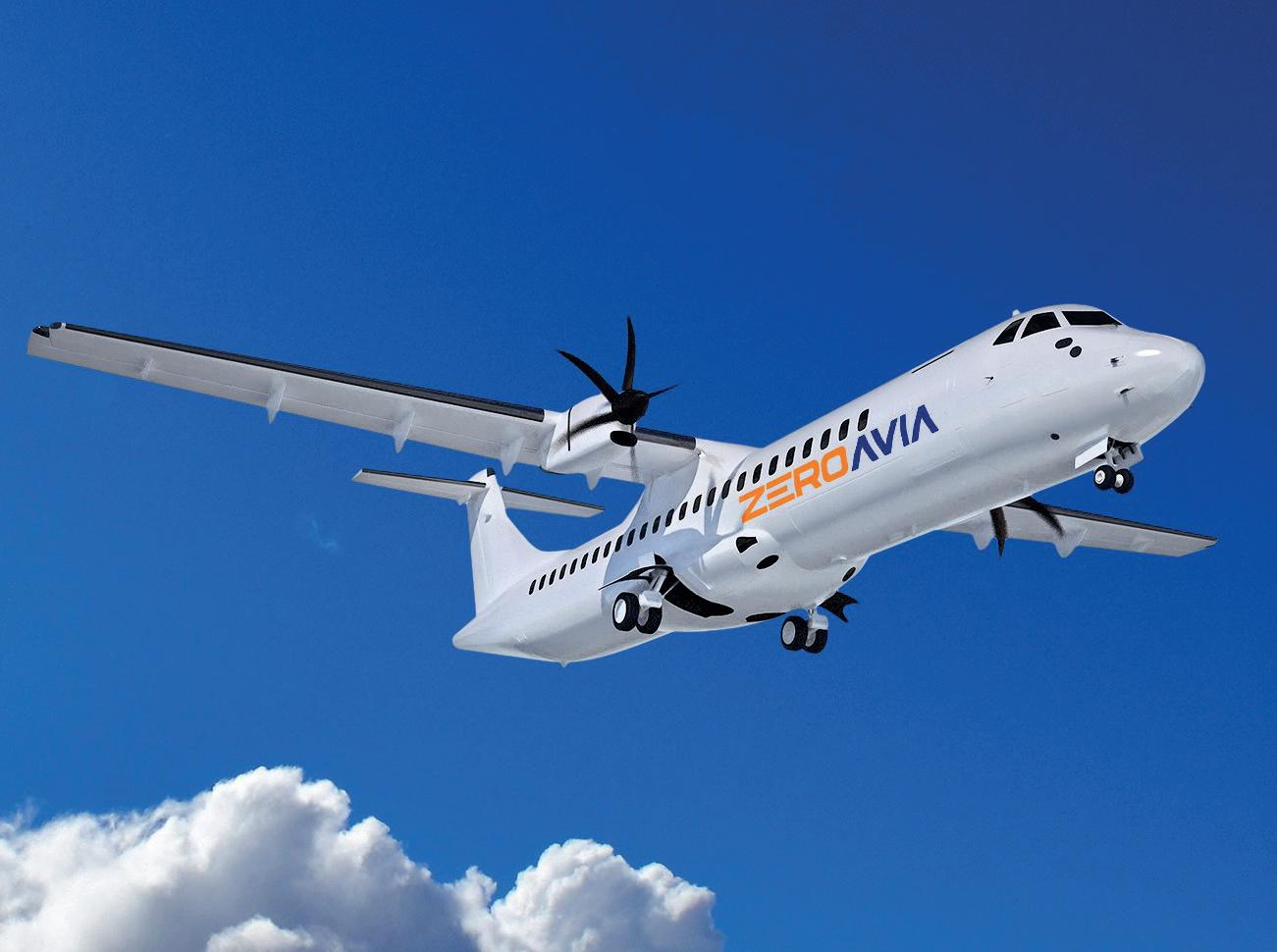
Flying has come under a critical eye in recent years, as society has woken up to its environmental impact - in 2019 the buzzword of the year was the Swedish ‘flygskam’ meaning ‘flight shame’. It’s not surprising the public has become concerned. The aviation industry is responsible for 2.5% of global emissions and aircrafts emit nitrogen oxides (NOx), vapour trails and aerosols which heat the planet twice as much as greenhouse gases. But it’s not just the planet’s health at stake: NOx and particulate matter from tyres on tarmac have been linked to asthma and lung cancer.
It has become clear the status quo cannot continue if a healthy and sustainable future is to be created. This hasn’t gone unnoticed by the government, which released its Jet Zero strategy last summer, outlining plans for aviation to be net-zero by 2050. The aviation industry is also aware it needs to change, with investment in low-carbon options such as sustainable aviation fuels (SAFs) and electric planes. As both government and industry try to determine what the future of flying looks like, one project could provide the
answer. Aircraft developer ZeroAvia is working on a plane powered by a hydrogen-electric powertrain which releases 90% less emissions throughout its lifecycle compared to jet-fuelled aircraft. Using solar panels to power an air compression pump, oxygen reacts when combined with hydrogen to produce electricity and powers the motor. Impressively, the only emission from the process is said to be water.
The project is close to becoming a reality with help from Ansys which provided ZeroAvia with multiphysics simulations, such as structural, electromagnetic and electromechanical analysis. Mariano Morales, Director of Technical Account Management at Ansys, says hydrogen powered planes have a lot of potential for rapid scalability, due to their low cost and light weight. Electric planes, in comparison, require lithium-ion batteries which are 48 times less energy dense than kerosene.
‘This means the size, and therefore the weight of the batteries that would be needed to power large, commercial planes is prohibitively high,’ he explains. ‘Hydrogen is three
times more energy dense than regular jet fuel, meaning space and weight are much more manageable.’ The powertrains can also be ‘retrofitted into existing aircraft, which simplifies regulatory issues and reduces time to market.’
The engine is still in development, but ZeroAvia predicts its hydrogen planes could carry between 9-19 people over 300 miles by 2025. In future, the company aims to carry around 200 passengers over 5,000 miles by 2040. However, critics say more focus should be on increasing renewable energy capacity, rather than on cleaning up the aviation industry’s act. Anna Hughes, Director of Flight Free UK, an organisation which campaigns for flight-free travel, says flying must come ‘at the bottom of the list’ of priorities: ‘We are currently in an energy crisis. We don't have enough renewable energy to power our home. Why would we allocate the precious renewable energy that we have, so we can do a luxury activity such as flying?’
Many sustainable aviation programmes are focused on SAFs, as they can cut emissions by 80% according to BP. Morales also suggests they will play a ‘big role’ in the ‘transitionary period’ to green aviation, but Hughes doubts their environmental credentials, since they’re made from waste fuel out of landfill. This is said to save emissions by preventing them from being generated in landfills. But Hughes says this is ‘skewed logic because you're still burning it and that doesn't give us any incentive to reduce the amount
of waste we send to landfill.’ There are also issues which renewably powered engines can’t necessarily solve, as Communities Against Gatwick Noise Emissions (CAGNE) points out. Campaigning against the expansion of Gatwick Airport, many members of the organisation, which began in 2014, live in its surrounding areas and experience the effects of flying first hand. Noise pollution is a particular issue, according to CAGNE Chair Sally Pavey: ‘Aircraft noise has got quieter but it's the number of aircraft that they release at peak times. One of the major issues is that it's 24/7, so night flight is a major issue for local people and when I say local, I mean in the 30-mile radius.’
A concentrated flight path means someone who was once getting one or two planes an hour could get up to 56 aircraft flying over their house. Research shows aviation noise leads to disturbed sleep, impacts children’s cognitive performance and is even linked to cardiovascular disease. While there’s indication that electric and hydrogen planes could be quieter, Pavey says ‘noise isn’t actually high on the agenda’.
Hughes’ Flight Free UK campaign encourages less flying to reduce emissions, claiming that inexpensive sustainable solutions are still a long way off from being fully formed. CAGNE is also on board with this, as Pavey says ‘new technology is still on the drawing board’ and ‘isn’t going to be on the commercial routes anytime soon.’ Both highlight the importance of tackling aviation emissions today, as

temperatures rise and global deaths caused by air pollution continue to occur.

Less flying could be achieved by raising flight costs through taxes on aviation fuels, tackling greenwashing airlines and making consumers fully aware of the environmental impacts of flying. Rishi Sunak’s recent flight from London to Leeds which landed him in hot water also highlights another proposition: to ban flight routes between places which can be travelled to via train. This measure was recently introduced in France, as certain short-haul flight routes have been banned where alternative rail routes are available.
Flying is a key part of our culture, as we have become accustomed to holidays abroad, which will be ‘difficult to reverse’ according to Hughes. However, she has hope that things could change, as she points to the behavioural change witnessed once smoking in public places was banned: ‘As soon as the ban came in, people stood outside or didn't smoke anymore. We are so reluctant to change our behaviour, but once the change happens we adapt very quickly.’
Arguments against a reduction in flying say it could impact the economy and lead to job losses. But Pavey says the ‘jobs never materialise’ when airports expand and Gatwick Airport ‘always struggles to find staff.’ Automation within the aviation industry is also having an effect, with the New Economics Foundation finding that the number of
jobs available per passenger falls by 2.6% per year. Hughes says we should focus on driving green jobs instead, adding: ‘Every job in aviation can be relocated elsewhere, there are transferable skills. For example, if you are an engineer, you could be a renewable energy engineer.’
Morales admits transforming aviation into a sustainable industry ‘will not happen overnight’ and will ‘involve lots of innovation and effort.’ However, in response to those who are doubtful of the industry’s ability to become net zero, he says: ‘Sometimes it is easy to be sceptical when certain technologies are in their initial stages (there were experts initially who predicted that the internet would never catch on) but the industry is committed to a more sustainable future and is pouring a lot of resources into that endeavour.’
The industry must remain focused on accelerating the transition to greener initiatives, adds Morales, who suggests that simulation will play a key role in achieving this. Engineering simulation, virtual prototyping and digital twins can ‘push forward and fully implement some of the amazing technologies and new solutions into the mainstream.’ It can also help to drive down costs, reduce time to market and reduce the need for wasteful prototypes.
Aviation will always remain a key form of transport and finding sustainable solutions to transform the industry is important. However, it’s also crucial that the government also offers support elsewhere to tackle transport emissions and boost less carbon intensive modes of travel. Trains in the UK have been facing a difficult period with ongoing strike action, ancient infrastructure and prohibitive costs. It’s imperative these problems are fixed not just to repair Britian’s broken rail system, but also to drive down emissions as the pressure is on to reach net-zero on time.
The path towards sustainable aviation is still unwinding and it's still unclear exactly what the future of aviation looks like. While we may see behaviour changes when it comes to flying, with people more aware of the environmental impacts, flying will always remain a vital form or travel, connecting people to faraway places. The industry also shows no signs of slowing down, with demand growing by 5% per year from 2000 to 2019. Currently, the industry is off track on reaching net zero, according to the International Energy Agency, and ZeroAvia’s planes are not set to become commercialised on a large scale until 2040. It's clear that rapid innovation is required to get aviation on track and to rectify an industry which has been clouded by its negative environmental record.
Martin Guttridge-Hewitt hones in on Oxford, home to a ground breaking Zero Emission Zone pilot, Europe’s largest EV charger, and prototype street technologies aimed at solving some of the biggest logistical problems facing Britain’s switch to electric vehicles.
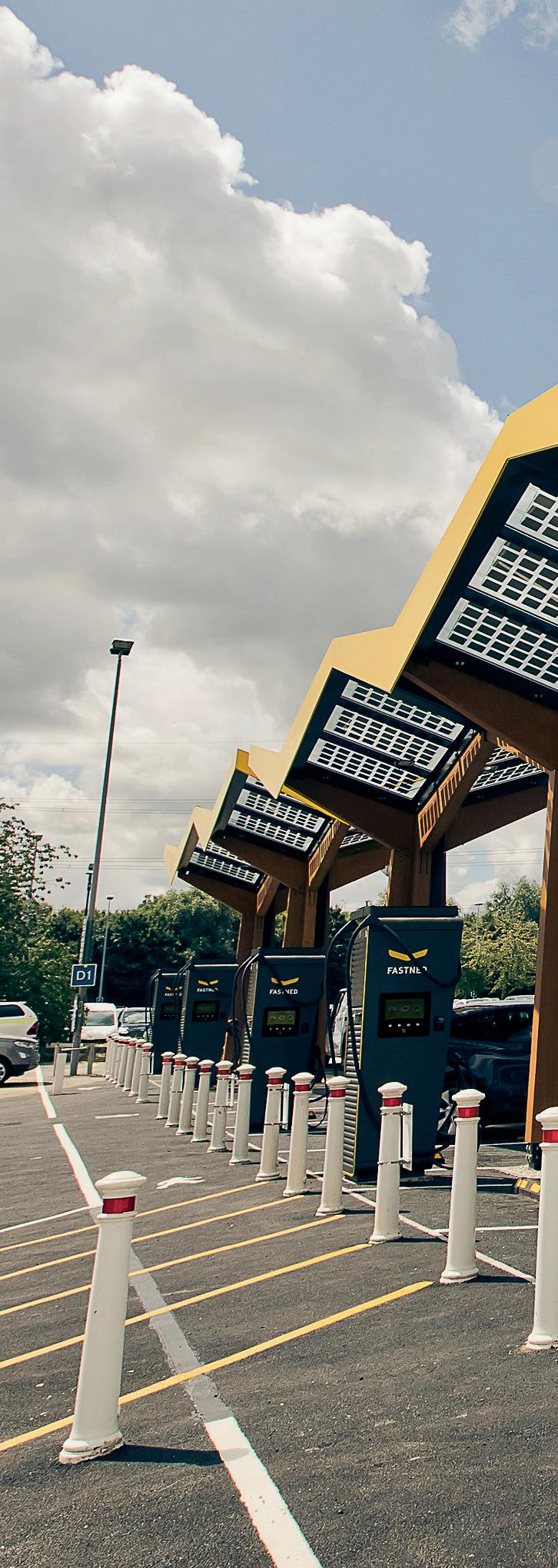
speeds at just 10mph across all routes due to sheer volume of traffic.
With a teaching history dating to 1096, making it among the oldest seats of higher education on the planet, the University of Oxford’s reputation for era-defining innovations and breakthroughs is as enviable as the list of Nobel prize winners linked to the institution. Not to mention countless ground breaking books it has published. But the city itself is also home to game-changing ideas.
Nowhere is this more visible than the drive towards clean travel.
Policymakers in Oxford have been positioning themselves at the frontier of ideas and technologies that can help the UK as a whole move away from heavily polluting modes of transport. The launch of a pilot Zero Emission Zone last year made headlines as one of the most far-reaching schemes of its kind anywhere in the world, and a larger permanent iteration is due to come into effect this year. And that’s just one example.
Elsewhere, an Oxford City Council report suggests six new ‘traffic filters’ on roads around town could offer a 35% reduction in congestion. Some are opposed to this, but it is music to the ears of others. Like members of Oxfordshire Liveable Streets, who branded public transport in the area as ‘no faster than a horse and cart’, with official figures putting average bus
But the city’s pioneering efforts in developing a more sustainable transport network go well beyond this. Take GUL-E, for example. The system involves a durable channel – or gully – installed in footways, enabling smooth home electric vehicle (EV) charging for those without a driveway. Integrated into the pavement to avoid obstructing public highways, this unique intervention causes less street clutter than charger bollards and comes in at a fraction of the cost.
Proof of where long-term commitment to moving past diesel and petrol vehicles has taken the city, the design is just one product from a wider project known as GULO, or Go Ultra Low Oxford. Launched in 2017, the aim is for 24 residents and car clubs to trial five different charging technologies to ascertain viability, with a view to wider rollout across the city, county and beyond. The results so far have been impressive enough for the University of Oxford to label them of ‘global scientific significance.’
‘As a city council we’ve sectioned off part of our services to become Oxford Direct Services, or ODS. They still have responsibility to fix rental housing stock, run the car parks, and it’s entirely owned by the council, but it means this arm can also be income generating and bid for outside work,’ says Cllr Louise Upton, Cabinet Member for Health and Transport & Cycling Champion. ‘They’ve taken on GUL-E and are running with it, and this is very much something aimed at local authorities elsewhere to buy into. It’s not simple, and the work is about more than just the solution of getting a cable from someone’s house across the pavement.
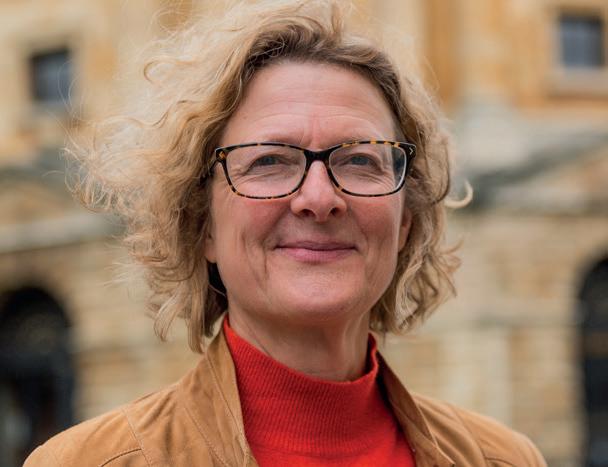
‘The expertise required also involves understanding the planning consent needed to actually put this infrastructure in place, for example on the outside of a house that might be in a conservation area. And how you get permission from a transport authority to run GUL-E across pavements and things like that. But it’s really important that we get this solution because for terraced housing there’s no other way of charging your car,’ she continues.
To understand how urgent that need is, UK government figures for March 2020 – the most recent available – suggest around 7m homes in Britain’s overall housing stock are terraced, with most occupants reliant on street parking. If the country is really bound for a future in which zero carbon vehicles become the norm, a huge number of residences will need innovations like GUL-E to be made available if they are to have the option
of switching to EVs. The solution is now being actively marketed in the hope of reaching as many regions as possible, helping others expand infrastructure and raising vital revenue for the city at a time when budgets are under immense pressure.
‘The ward I represent happens to be one of the wealthier, leafier parts of central Oxford. Lots of people want to know when they can start thinking about buying electric cars,’ Upton replies when we ask if everyone has welcomed the level of investment these projects have seen. ‘In other areas of the city this is never discussed on the doorstep, because there’s no way they can afford an electric car, although this is starting to change, I think, as a second hand market develops.
‘But this is one of the reasons we have written an Electric Vehicle Infrastructure Strategy,’ she continues. ‘We need to meet future demand for charging infrastructure, but we want to
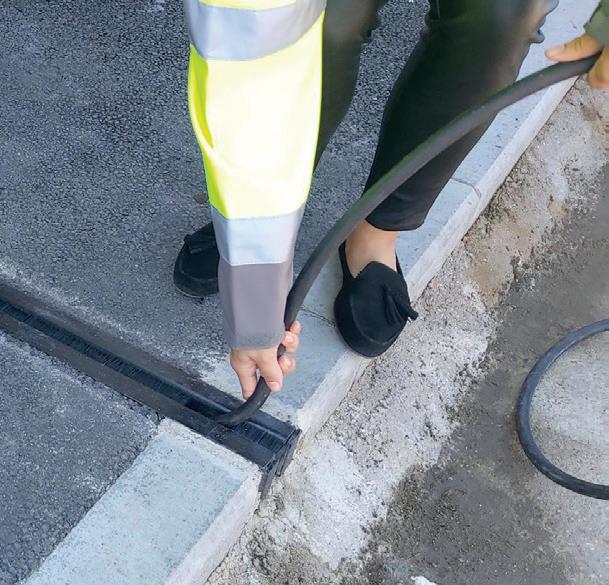
do this equitably. That’s not necessarily something the council can put in ourselves, we don’t have the money, so we’re looking to work with private contractors to make sure we parcel up the city equally.’
One shining example of a partnership between the council and business is the Energy Superhub - the world’s largest hybrid battery storage system and Europe’s most powerful EV

charger. Although demand is nowhere near potential capacity at the time of writing, excess electricity not used by vehicles is currently channelled to ground source pumps heating over 60 council homes. As Tim Rose, Energy Superhub Oxford programme manager at EDF Renewables UK, which runs the site, tells us: ‘The aim is to help Oxford reach net zero by 2040, by decarbonising power, transport and heat.
‘The project is fully operational and capturing data and insights from the different technologies and how they are used, to help create a blueprint for other towns and cities to achieve net zero,’ he says. ‘[This] is one of up to 40 Energy Superhubs EDF Renewables UK is developing around the country, delivering up to 2GW of battery storage and creating the charging infrastructure needed to support the estimated 36m EVs that will be on UK roads by 2040.’




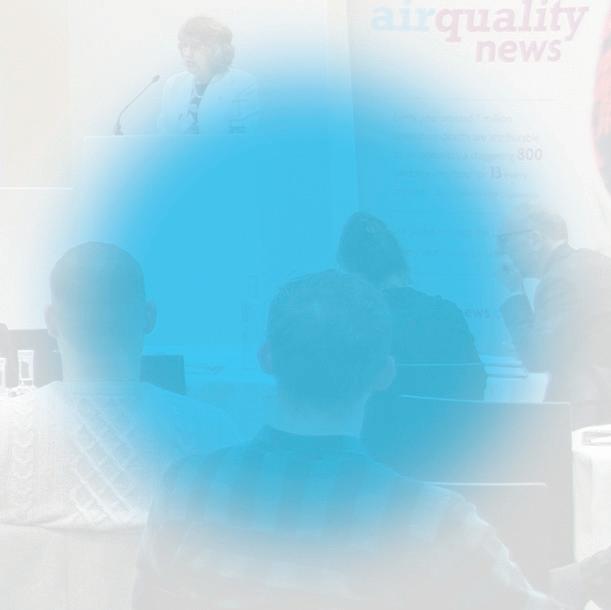

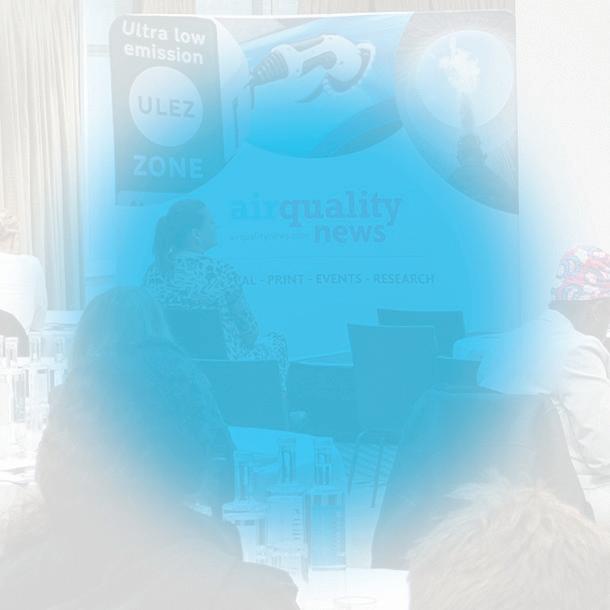


Brought to you by:




As we navigate into another recession, it’s vitally important we come together to learn how to tackle and improve air quality in these testing times. That’s why our 2023 Northern Air Quality Conference will focus on how to improve air quality in a recession.

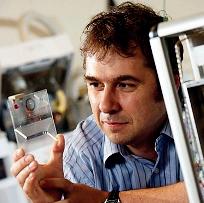
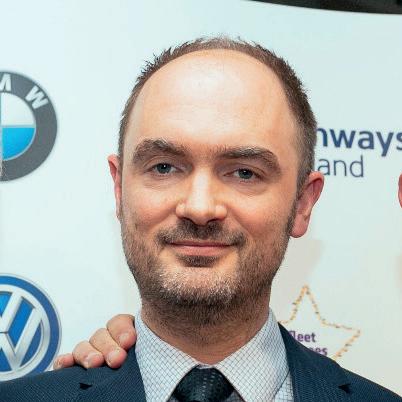


 Jenny Jones, MP The Baroness of Moulsecoomb
Jacob Roberts Cenex
Nannette Yousef Runnymede Trust
Prof. Rosie McEachan Born in Bradford
Andy Hickford Leeds City Council
Jenny Jones, MP The Baroness of Moulsecoomb
Jacob Roberts Cenex
Nannette Yousef Runnymede Trust
Prof. Rosie McEachan Born in Bradford
Andy Hickford Leeds City Council
Georgie Hughes investigates e-scooters, evaluating the benefits they provide to the environment and society and the challenges facing the sector.
When looking at air quality related to transport much of the focus is on the transition from polluting petrol and diesel cars to electric and rightfully so – it is the biggest contributor to toxic air and is responsible for a large amount of carbon emissions. But some say this doesn’t solve the issue of congestion and still restricts society to heavy car dependence, with vehicles continuing to take up space. Instead, micromobility could be the solution, providing a convenient form of travel, while also cutting emissions and tackling dangerous pollution.
Micromobility encompasses small, lightweight vehicles which offer a cheap form of travel that doesn’t contribute to local air pollution, typically running on electric batteries rather than fuel. Two-and-a-half years ago, the government launched rental e-scooter trials across England to examine how they could be used and the environmental and social impacts of incorporating them into the transport mix. Set to run until May 2024, results show that they have been widely popular, with 14.5 million trips made between July 2020 and December 2021, according to government figures. Shared transport charity CoMoUK’s chief executive, Richard Dilks, says: ‘This hasn't just been a sort of novelty, try it a couple of
times and move on. It's been sustained through the two and a half years.’
The environmental benefits of e-scooters are clear, with research showing shared mobility could reduce emissions if used instead of more carbon intensive travel. Data from Voi, an e-scooter and e-bike rental company, found that 14% of users replaced car journeys with e-scooters, while just over a third reported using their car less. It’s common for the vehicles to replace walking and cycling journeys, which may seem to discredit some of the environmental benefits. But e-scooters are particularly useful for covering the first or last mile gap which a car could have been used for. Often, they are also combined with public transport – 55% of Voi riders combined their journey with public transport.
If micromobility was used more, this could mean areas taken up by roads could be redefined, with space for more street furniture, mobility hubs, shop displays or outdoor hospitality seating. Matthew Pencharz, Head of UK Policy for Voi and the former Deputy Mayor for Environment and Energy in London, says it’s clear that e-scooters can enhance cities: ‘In Voi’s areas in England alone our service boosted the local economy by some £53m, and that this is centred on our high streets, which have been struggling for some

time. Voi riders tend to spend their money on the high street, rather than out of town shopping centres, and have boosted food and beverage sales markedly, leading to an increase in people employed by that sector by almost 1.7%, which had the material impact of creating some 260 jobs in Bristol.’
Richard Dilks says he believes there’s a lot of room for growth in the micromobility sector, with possible expansions within existing e-scooter trials, such as London which could have more pickup and drop off points. He adds: ‘At the moment, the door is closed on having new trials, so we're kind of frozen in time with the existing trial areas that we've got. But there is definitely appetite to have more trials.’ With micromobility still being a ‘fairly untapped territory’ there is also a lot of potential for further innovation with new vehicles and products.
However, this is being hindered by the complicated legality of e-scooters, as it’s legal to buy them and use rentals to ride on the road, but it is currently illegal to use private e-scooters on roads, as they don’t comply with traffic laws. Riders are also required to have a provisional driving licence. With no clear long-term plan on how to rectify this, it’s left the industry at a standstill, with planned reforms under the Transport Bill delayed until next year. It’s thought the government could create a new vehicle category for low-speed zero-emission vehicles, like e-scooters, unlocking growth for the industry which is worth billions.

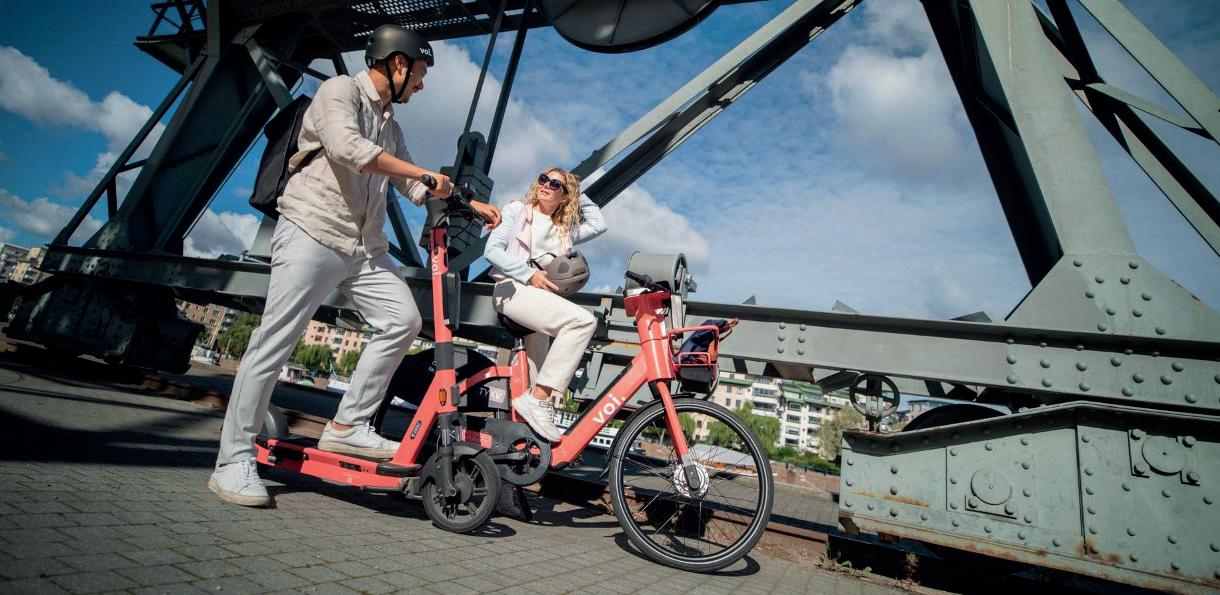
‘The Government now needs to push ahead with legislation,’ says Pencharz. ‘The UK is seriously lagging behind the rest of Europe.’ Legislation must include an independent safety regulator and ‘remove blockers’, such as the need to have a provisional licence, which he says does not provide ‘any proof of road-sense' and could encourage private car use. ‘This industry is a key enabler of the transition to a zero-carbon economy and just needs legalisation and light, effective regulation to unleash its potential,’ Pencharz adds.
Legalisation could also help to address some of the safety fears surrounding e-scooters, as there’s been some reports of accidents and fatalities. Dilks says the incident rate throughout the trials has been fairly low compared to the usage levels of e-scooters, but there is room for improvement. ‘It's one of those areas where legislation done right would help to provide a framework by which we can keep up to
date on this,’ he explains. ‘As things get experimented with and are proven to work, that would give us a way to bring in new standards.’ This is already seen in practice, with some operators and authorities bringing in measures to tackle drunk riding through curfews or reviewing video footage. For an e-scooter scheme to be successful, it’s vital for authorities to collaborate with operators and other agencies, such as the police or local NHS trust, to build a partnership approach. Also picking the right zones may sound ‘ridiculously obvious’, says Dilks, but its key to have ‘good pickup and drop off points that work for a balance of people.’ Using car parking spaces could be a way to achieve this and ensure scooters are out of the pavement. Continued promotion and plugging alongside other shared transport schemes and public transport will also benefit programmes.
Local authorities are said to have had a ‘generally positive’ experience throughout the e-scooter trials, suggesting that we could see more and more e-scooter and micromobility schemes on our streets soon enough. As transport is a major contributor to air pollution this can only be a good thing and could provide real benefits to communities, bringing cities to life. With so much room for growth in the sector and the success of the e-scooter trials, it's an exciting time for micromobility.
new PID sensors. ONE global manufacturer.

TARGET GAS: VOLATILE ORGANIC COMPOUNDS
Introducing the new and improved Alphasense PID range. Five sensors which deliver high-accuracy VOC detection, are available from stock and provide exceptional value. One global manufacturer dedicated to product innovation in gas sensing.

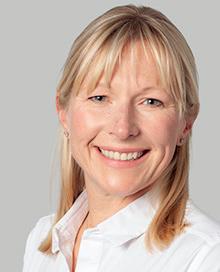
Martin Guttridge-Hewitt speaks to an industry expert about her storied experience in air quality, from Greater London Authority policy to a company repowering high polluting diesel buses with all-electric engines.
People can spend half their life figuring out what they want to do with the rest of it. For others, finding a calling comes much easier.
To say Lucy Parkin falls into the latter group is stating the obvious. Director of Environmental, Social & Governance at Kleanbus, today she’s privileged to work in an area that she’s not only incredibly passionate about but can also call upon decades of experience in order to excel in. Before we dive into her background, though, it’s first important to reveal some details about the company.
UK firm Kleanbus is at the forefront of Britain’s net zero ambitions. Using a revolutionary system, the business has developed a solution to one of the biggest obstacles standing in the way of the country’s public transport system and aims for carbon neutrality. Their technology – an e-drivetrain in a box - means diesel bus engines can be quickly transformed into all-electric, with the process taking as little as two weeks per individual vehicle and coming in at a price point around one-fifth the cost of buying a comparable EV straight off the production line.
In January, the re-powering specialist completed its first build, taking an Optare Solo bus that ran on fossil fuels and internal combustion, and turning this into a plug-in vehicle. Proof of concept, a number of UK operators are now exploring how this could efficiently transform their fleets. Speaking from her London home, Parkin is keen to point out
her job is the latest in a long line of positions that have seen her contribute to improving air quality, and public health.
‘My background is in air quality and atmospheric physics,’ she tells us enthusiastically, explaining that her career began at an air quality consultancy working on highways, government and local authority projects. ‘From this it became very clear that transport was going to be a huge part of my work and my personal mission on air quality to benefit society and the environment.’
“We’re seeing this massive shift to electric cars, but with buses, they’re built to last”

Another consultancy job followed, then the capital called with an opportunity at the Greater London Authority (GLA), where Parkin was tasked with policy advice within the air quality team. Notably, this would see her play a pivotal part in the city’s journey from congestion charging and the Low Emission Zone, to the gold standard Ultra-Low Emission Zone (ULEZ). Set for expansion this summer, the world’s most comprehensive city emissions reduction scheme sets a benchmark others now need to meet.
‘It was a brilliant time when I joined the GLA, Ken Livingstone was Mayor at the time and he’d just launched the concept of London’s first Low Emission Zone,’ she says, explaining work was also underway to tackle the heaviest passenger vehicles – buses and coaches – and the pollution
they cause. ‘Then Boris Johnson arrived and we began revising policies, around that point I moved to Transport for London (TfL) and began working on the ULEZ, which is when I first started thinking about what could really be done in terms of London’s huge bus fleet.’
Continued involvement in the city’s public transport authority, specifically from an air pollution angle, saw Parkin eventually working under the tenure of current London Mayor Sadiq khan, before being offered to climb aboard a new service in the form of Kleanbus itself: a business she believes can deliver much more than emissions reductions, with the concept also touching upon socioeconomics within the context of air pollution itself.
“an e-drive train in a box - means diesel bus engines can be quickly transformed into all electric”
‘Our public transport systems are vital to keep cities and towns moving, vital for access to jobs, and allowing those people in more deprived sections of society to reach essential services. So I just thought that Kleanbus was a really practical solution, offering operators a chance to save money,
level of understanding and commitment. Sadiq Khan has said London will no longer order diesel buses, which is amazing and will be really helpful. But currently there are some diesel models on the roads that still have 14 years left in them. And outside London, there’s obviously a lot more. Even in London, if they are talking about net zero as a city by 2030, we need to find a way to bring forward the date by which all these old engines are removed,’ Parkin continues.
While the vision behind Kleanbus’ modular system –adaptable to work with any diesel bus– is truly impressive, the company’s holistic approach to rolling out this technology is arguably where the real genius lies. Regular readers of AirQualityNews will be only too aware of huge disparities between UK regions in terms of EV charging infrastructure, not to mention slow progress at national level when it comes to ensuring enough charge points are in place to cope with rising demand. Reassuringly, we’re told Kleanbus is also developing options that go well beyond repowering alone.
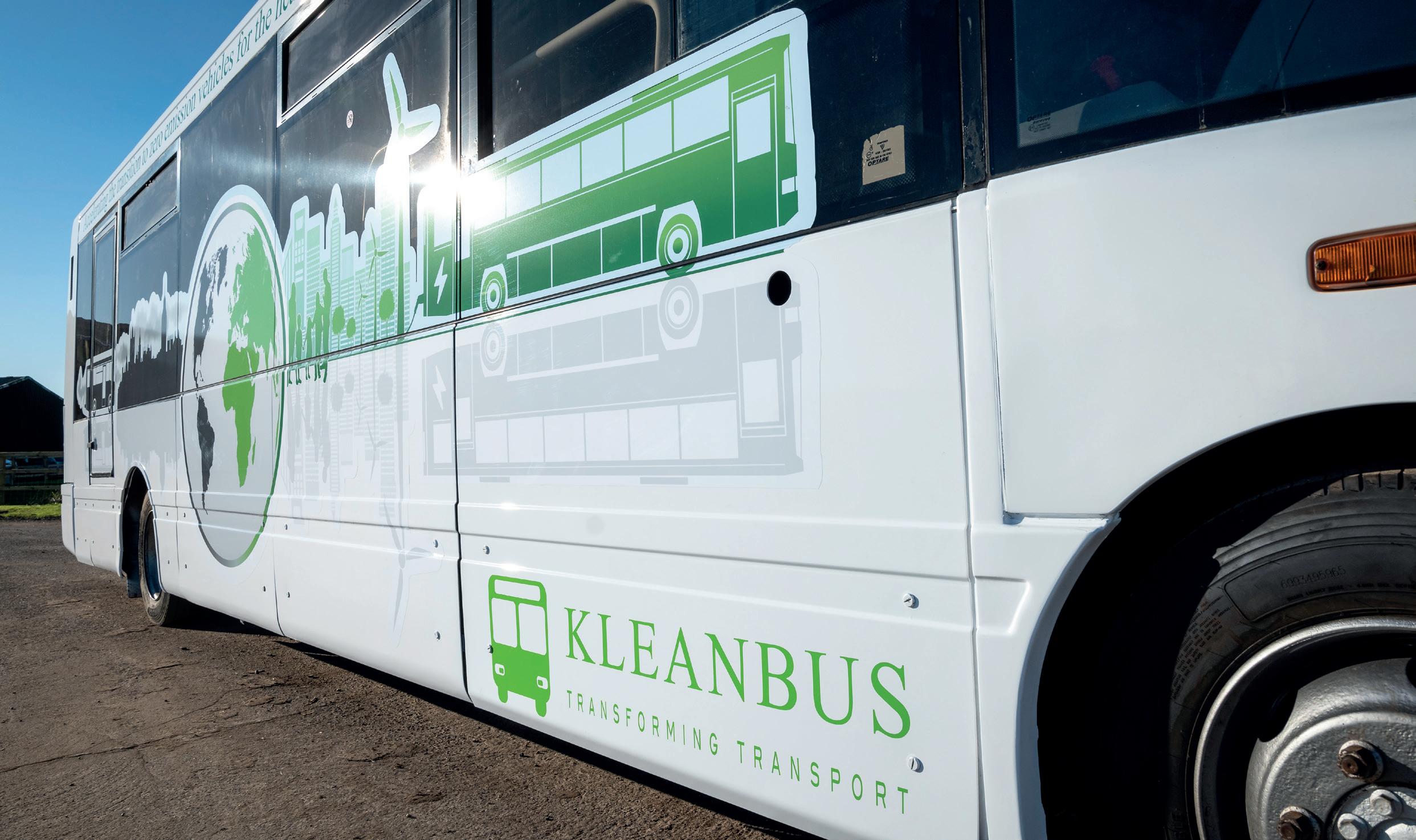
‘We’re trying to have conversations with infrastructure providers, particularly in terms of ideas like opportunity charging – where charge points can be placed within bus

save time, and protect the future of these important systems,’ Parkin tells us. ‘One of the major reasons I wanted to get involved, personally, was this idea of equality between public transport and private transport. We’re seeing this massive shift to electric cars, but with buses, they’re built to last –expectations are they will be in service for 15, 20, maybe 25 years.
‘In London, I see electric buses roll by the window daily, there are huge operators here, we’ve had the Low Emission Zone for many years and now the ULEZ. So, there’s this
stands where vehicles wait for short periods of time. This could drastically reduce requirements on battery, bringing vehicle weight down and boosting efficiency…. So we can provide charging packages and speak to operators about finance options,’ she says. ‘It’s all really important – I mean, buses are responsible for relatively small amounts of emissions on the pie chart, but these are in towns and cities near vulnerable people, and at times when roads and streets are busy. This means exposure limitation is critical to public health.’
A revolution is happening in air quality monitoring. With increasingly affordable air quality sensors, Miriam Gradel explores how we stand a greater chance at monitoring levels across thousands of locations by inviting communities to take part.
With the Clean Air (Human Rights) Bill en-route to becoming a legally-binding act, the pressure is on for UK authorities to make better decisions for combatting air pollution. Speaking in the House of Lords in November 2022, former Labour MP, Baroness Sue Hayman, replied to critics of the proposed act who branded it unnecessary due to the existing framework in the Environment Act: ‘What good is a framework, if you
don’t have the overarching targets that are needed to deliver change?’ Take this a step further and the question changes: what good are targets without data to track them?
Data gaps in air monitoring remain a vital issue in the fight against pollution. In the Netherlands too, ‘a lot of people are afraid of data gaps within the country,’ says Tom de Nooij, Account Manager at Dutch data management company Civity. But by taking a different approach
to innovation, the Netherlands is exploring new solutions for and with local populations.
In 2018, the region of Utrecht together with Civity and Internet of Things (IoT) developer SODAQ launched the public-private partnership ‘Snifferbike’. Giving consideration to the country’s vast number of cyclists, the aim of the project was to develop an efficient commuter bike that doubles up as an air quality tracking device.
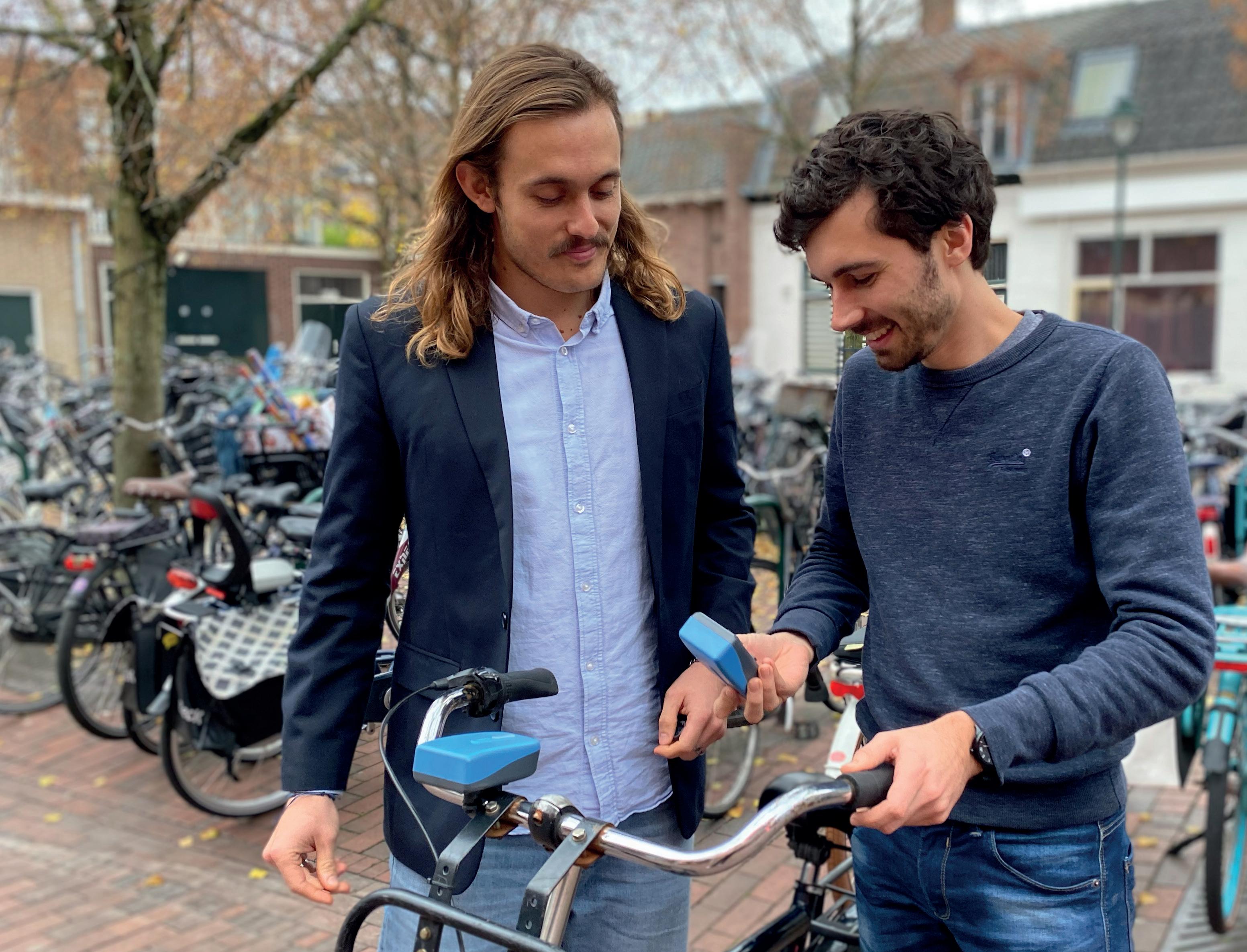
With many citizens using the same route for well up to 30 years, ‘better data on air quality will undeniably have an impact on their life and longevity,’ says de Nooij.
As an expert on using IoT to develop affordable and low-energy tracking devices, SODAQ got involved to ensure the quality of data collected could live up to the same standards of the subsidised air measuring stations. ‘If you want to gather hyper-localised data, you also need to know where you are when you are measuring, and in a very reliable way,’ says Ollie Smeenk, Co-CEO and Chairman of SODAQ. In a one-to-one comparison between the final sensor prototype and referencegrade sensors, the quality of the data was approved by the Dutch Air Quality Network. Now, ‘the authorities encourage all air quality initiatives in the Netherlands to use that specific sensor,’ says Smeenk.
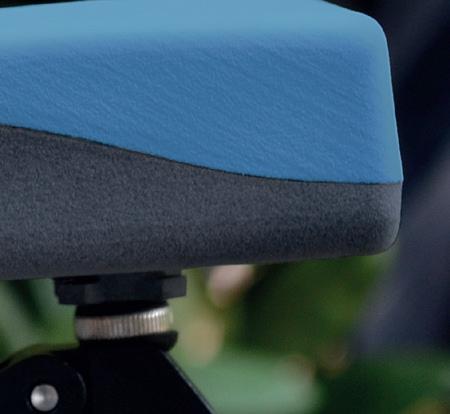
Since the Snifferbike project first began, the cohesion between authorities and citizens on air pollution has improved. Now regions outside the



Netherlands are getting involved and leveraging the Snifferbike technology to help populate a global air quality data map. According to de Nooij, ‘new data inputs also help to paint a clearer picture of how cyclists move’, creating more unity between the public authorities on infrastructure and the environment. With information provision improving, considerations for new bicycle routes have manifested along with more evidence to back public advice on health.
In the UK too, the involvement of local communities and citizens is helping to inform policy makers on air pollution measurements. However, as Dr Theo Damoulas, Professor of Data Science and Machine Learning at the University of Warwick explains, ‘data is not pure information.’ Since 2017, Dr Damoulas has worked as a fellow with the Alan Turing Institute’s London Air Quality programme focusing on integrating data and air pollution measurements from various heterogenous sources into the national air quality map. With no independent authority to qualify sensors, the challenge is not just to populate the data set, but to also make the measurements match.
‘Air pollution is a meta-problem. In order to understand it, you need to first measure it, but also, how well you are measuring it,’ says Dr Damoulas, adding that ‘data is not the end; it is only the beginning.’ Accounting for variables that affect measurements such as environment, frequency and the sensors degrading over time, the project has sought to create effective models for de-noising the data.
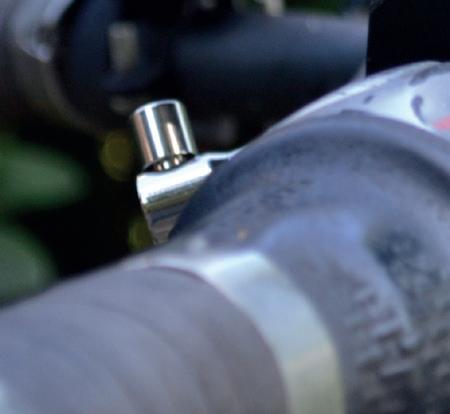


The next phase of the project is to combine machine-learning and AI to generate predictions for decision-makers with a variety of factors including health, income and population density taken into consideration. In the near future there is also a chance the API itself will be released to the public.
According to Dr Damoulas, educating citizens about the science and how data helps inform policy makers is equally as important as ensuring quality measurements. ‘Informing and involving people in anything that in the end affects the way they live their lives is the base of democracy and improves the participation of citizens,’ says Dr Damoulas. ‘It just needs to be done correctly.’
The correct way, according to
SODAQ, takes citizen involvement a notch further. Inspired by the principles of open-source, the company came together with its customers to turn the sensor into a low-cost and energy-efficient bicycle add-on known as the SODAQ Air. All design and manufacturing files are made freely available, rendering it possible for anyone to repair and optimise the device. According to Smeenk, ‘[creating an] impact is more achievable if people can pick up learnings rather than reinventing the wheel. People from all walks of life can very unexpectedly come up with good ideas on how to use the sensor
Currently, the Air only tracks particulate matter. By continuing with open collaborations, Smeenk hopes to soon be able to upgrade the device to also measure NO2 and NOX. For the Snifferbike, however, Civity is focusing on the user experience. By adding a fitness tracker, de Nooij hopes that more citizens are encouraged to opt for zero-emission options. As de Nooij puts it, with air pollution remaining a significant environmental and socioeconomic challenge, ‘if people are encouraged to use their bikes more [through increased air quality data and better infrastructure] then that is a significant move towards to climate neutrality.’
Ahead of Clean Air Day last June, UK100 introduced the concept of Clean Air Net Zero (CANZ) in our ‘Yes We CANZ!’ report.
Today, we are launching a follow-up report, ‘What CANZ be done?’
While embracing the same flair for bad wordplay, our new report builds on the concept of CANZ by focusing on the work local leaders in Birmingham, Camden, Hertfordshire, Leeds and Nottingham are already doing to align climate and clean air policies.
But where did CANZ come from?
Our first report argued any solution to the UK's air pollution public health crisis must acknowledge that action on air quality and the climate crisis are inexorably linked.
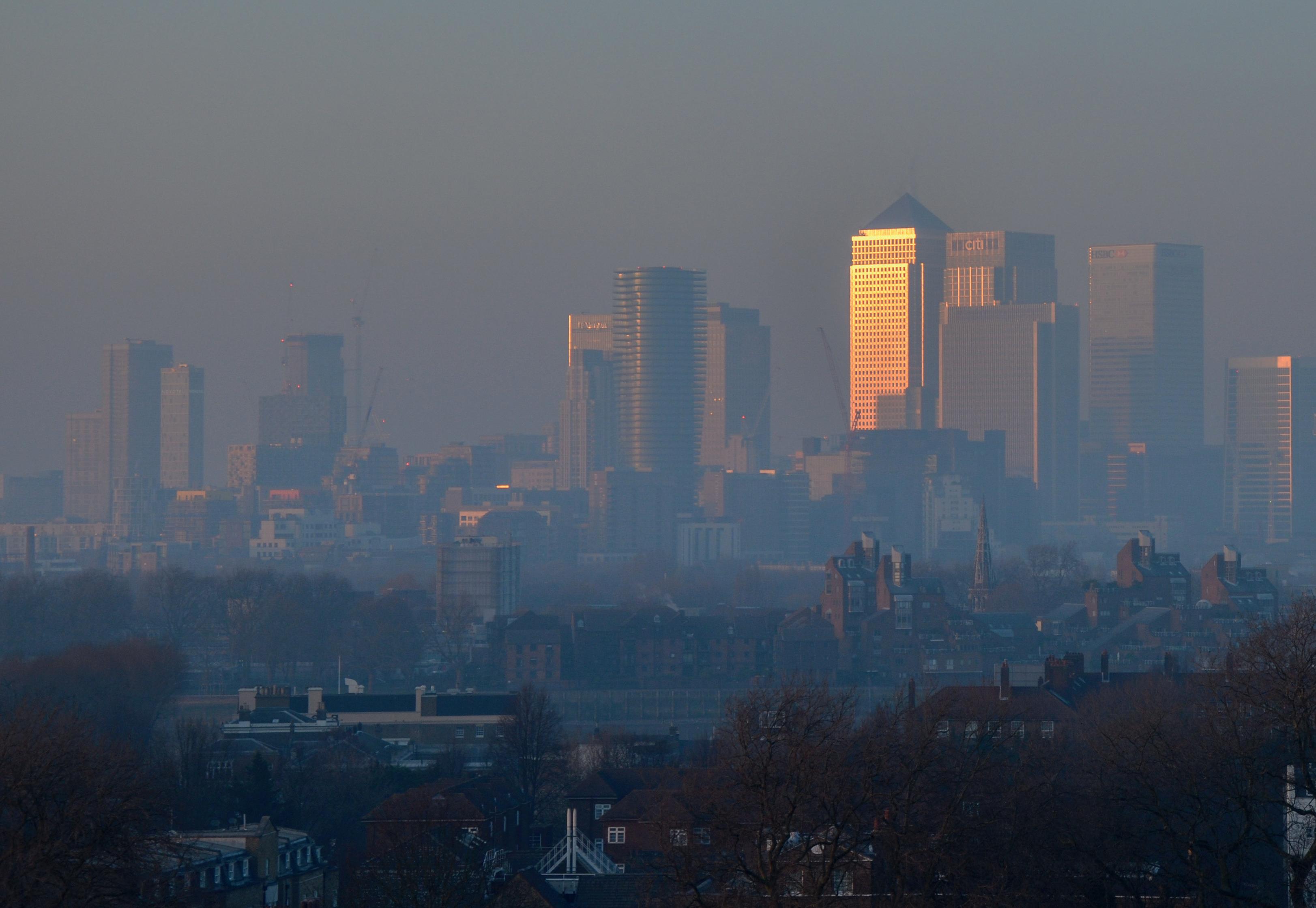
For the best example of the link between climate action and air pollution, let us cast our minds back a decade to 2013 when experts at West Virginia University were on the cusp of discovering one of the biggest corporate scandals of modern times; Dieselgate.
Our love affair with diesel began in the late 1990s when countries across Europe heavily promoted diesel vehicles as a ‘climate-friendly option’ owing to improved fuel efficiency and reduced carbon emissions.
Policymakers, it turned out, had given too little consideration to the toxic NOx emissions associated with diesel combustion. And they certainly had not anticipated
the extent to which certain car manufacturers would go to ‘cheat’ the emissions tests that did exist.
The ‘dieselgate’ scandal is one of the most deadly examples of the toxic air impacts of separating clean air and climate policies, but it is far from being the only one.
CANZ is about learning from these mistakes. And ‘What CANZ be done?’ is about showcasing the local authorities which are doing just that, shining a light on the local leaders at the forefront of aligning clean air and climate policies.
But that is not to say that we do not see the same opportunities for action across towns and cities all over the UK. In fact, in Yes We CANZ!, we identified four key ‘winwin’ actions that local leaders across the country can adopt to align and advance both agendas.
Here, ‘modal shift’ is a synonym for ‘sustainable transport planning’ or encouraging more people out of their cars by promoting and improving public transport while investing in infrastructure to boost walking and cycling.
It is a win-win because reducing the number of vehicles on our roads slashes carbon emissions and primary air pollutants.
And as ‘What CANZ be done?’ demonstrates, we are already seeing Birmingham City Council take the lead on this approach with its ambitious Transport Plan. Driven by the need to reduce carbon emissions, the plan also seeks to
reduce health inequalities while putting air quality front and centre of policy making

While the air pollution impacts of road vehicles is firmly on the agenda, the toxic air impacts of gas cookers and boilers make fewer headlines. Yet gas-powered heating and cooking is a growing concern as effective action against road emissions increasingly exposes it as a significant and stubborn source of toxic air.
Meanwhile, fossil-fuelled heating and cooking in our homes account for more than 14% of UK carbon emissions. Therefore, accelerating measures to cut heating demand through insulation and energy efficiency alongside switching to clean heating systems would deliver significant progress towards Net Zero and improve air quality — whilst reducing fuel poverty and creating green jobs.
In the London Borough of Camden the air quality and climate teams are actively working together to deliver on the council's commitment to ensuring new buildings do not add to carbon emissions or air pollution. They are also working on improving the energy efficiency of existing buildings.
The council also aims to integrate air quality information within the affordable warmth advice services and provide guidance to residents on health and air quality and simple actions to reduce exposure.
Ammonia in farming contributes to both greenhouse gas emissions and toxic air pollution. Agriculture accounts for at least 10% of UK greenhouse gas emissions. Europe-wide
studies have also shown farming to be responsible for over 40% of the most dangerous air pollutants.
Local authorities, therefore, should work to encourage agricultural transition and adopt sustainable food procurement policies like Gloucestershire County Council is doing with its Gloucestershire Regenerative Environment and Agriculture Transition (GREAT) Project.
In partnership with Gloucestershire Farming and Wildlife Advisory Group and other local stakeholders, the project is working to accelerate the transition to more sustainable and regenerative farming practices in the county by providing advice and financial support to local farmers.
The final win-win opportunity is about local authorities empowering local communities with better data on air quality to help them make personal choices to avoid the negative impacts of air pollution.
For example, Leeds City Council has launched a Clean Air Leeds website with transparent access to air pollution data, tips for residents, and targeted awareness-raising at medical professionals. Better data on air quality and greenhouse gas emissions can also boost community awareness and build support for CANZ actions while supporting communities to hold local and regional leaders to account.
By Clean Air Day 2023, we want to see CANZ mainstreamed. But to get there we need the Government to step up support to unleash the clean air and Net Zero ambitions of local authorities across the country.
Instead, this month, when asked by Shadow Minister Stephen Morgan MP, the Defra Minister Rebecca Pow MP flat refused to even engage with the recommendations set out by our first "Yes We CANZ!" report.
We hope the government will reconsider its position, though. And that is why we are sending our latest report directly to the Defra Secretary of State Therese Coffey — with a request to meet some of the local leaders who are driving forward action while the UK Government drags its feet

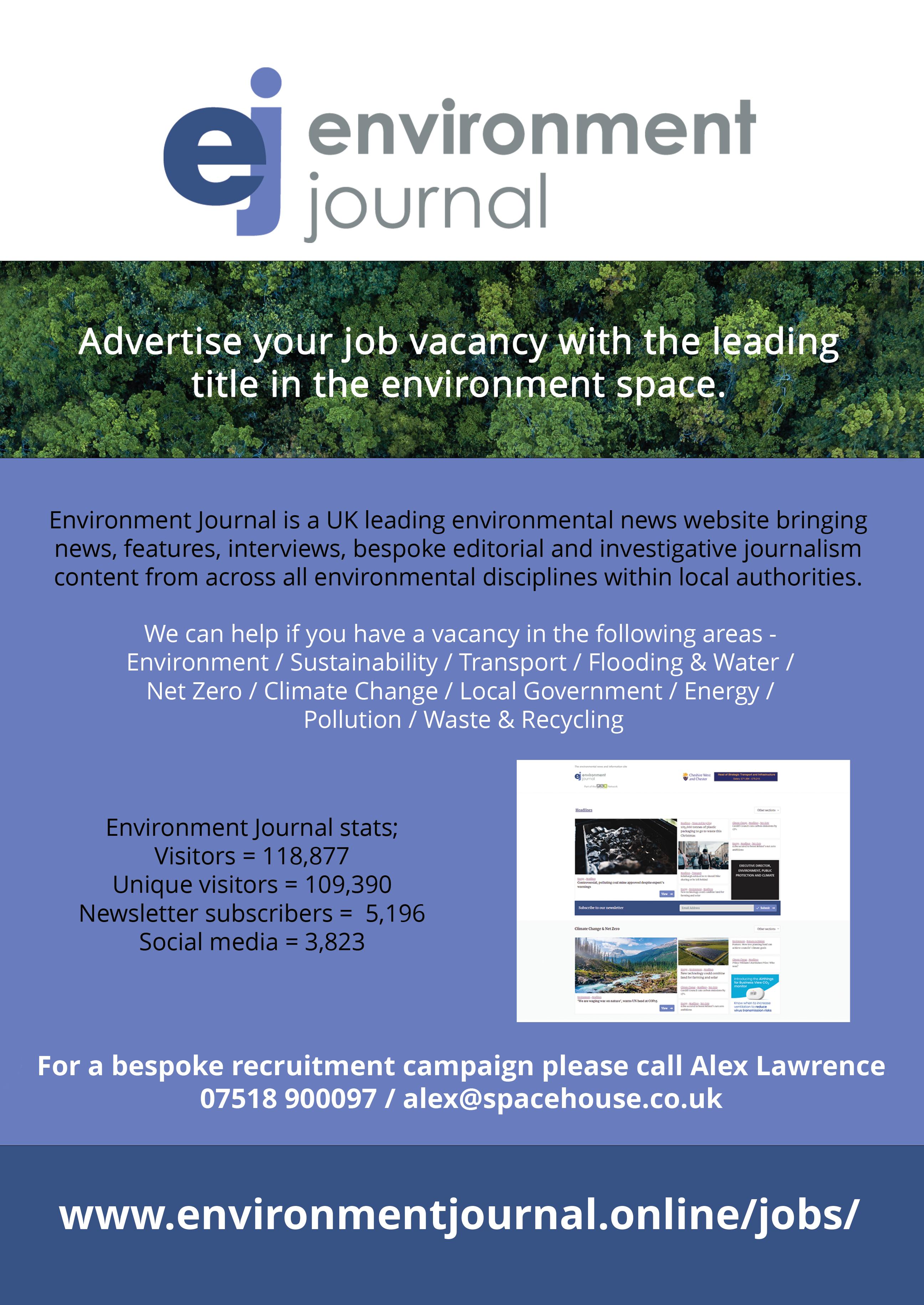
Emily Whitehouse speaks to the Co-Ordinator of South Lakes Action on Climate Change’s Coal Mine Campaign about efforts to bring a legal challenge against government in a bid to put the brakes on a project with serious environmental implications.
When it comes to the UK and the environment, 2023’s biggest news so far arguably comes in the form of a new High Court action pursued by South Lakes Action on Climate Change (SLACC) and Friends of the Earth. Responding to plans for a new coal mine in Cumbria to support the steel industry, concerns over emissions are widespread and valid. Not least in light of another big government idea – net zero by 2050.
The facility itself is due to be decommissioned one year earlier, but that’s little reassurance when you
consider its annual output, with some reports putting this at up to 2.8m tonnes of cooking coal and 400,000 tonnes of greenhouse gases. The fact UK steel producers have largely rejected offers to use the sulphur heavy coal, which the industry says is surplus to requirements, leaving the majority bound for export, also raises big questions.
Former Secretary of State, Michael Gove, granted permission on 7th December 2022, giving West Cumbria Mining the green light to begin construction at a site in Whitehaven. Those supporting the project claim it
will create thousands of ‘much-needed’ jobs. Meanwhile, critics argue it undermines climate targets.
The Coal Mine Campaign aims to ‘quash’ Gove’s approval by asking the High Court to launch a Statutory Review – impartial analysis of decisions made by a figure of authority.
According to the group’s Co-Ordinator, Maggie Mason, the final outcome is so controversial because ‘the company refused to make any assessment of what the emissions would be from the use of its coal’ while the government failed to consider the environmental impact of more fossil fuels entering
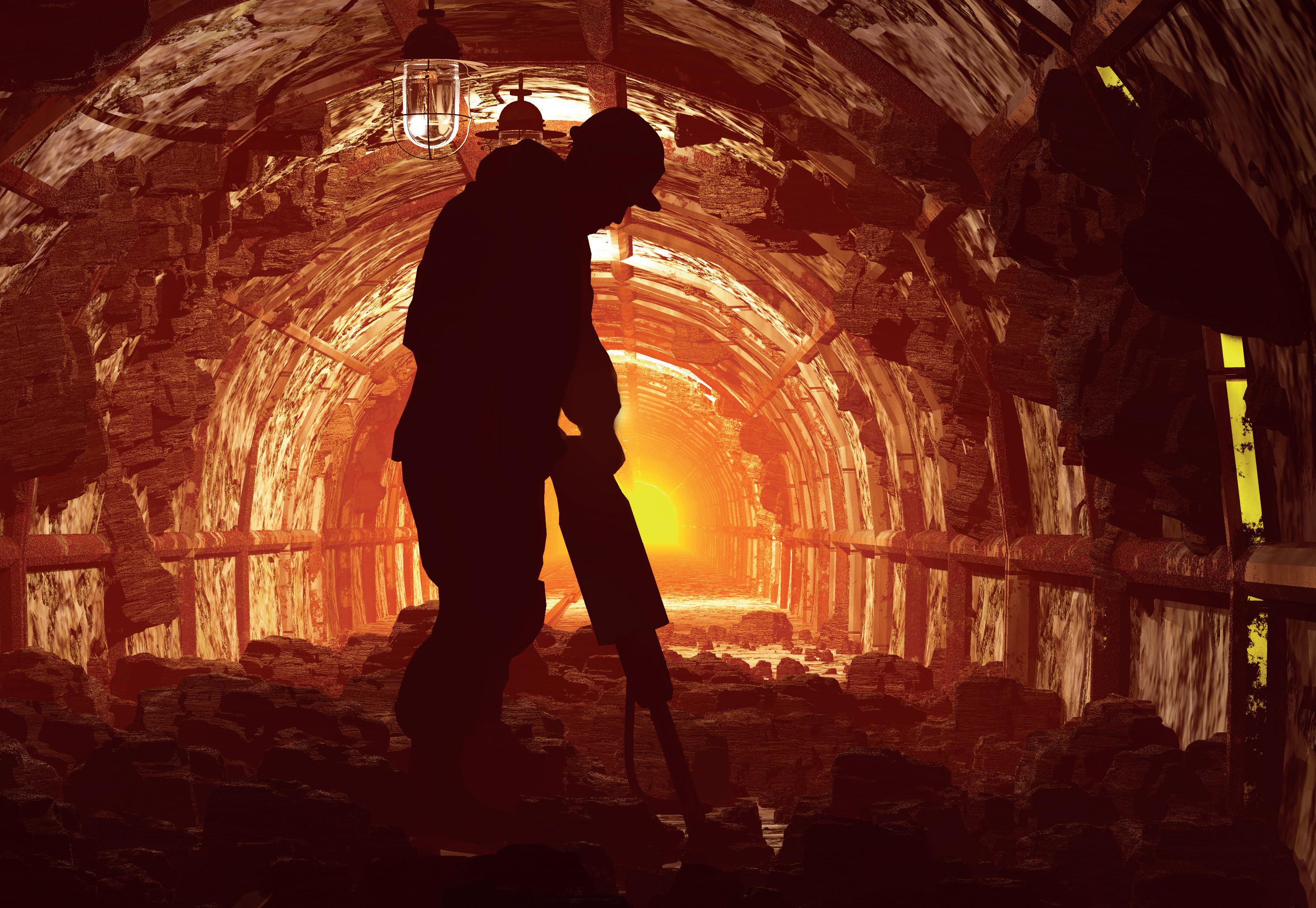
the atmosphere. Instead, policymakers simple ‘accepted the coal mine company’s argument’, dismissing all others.
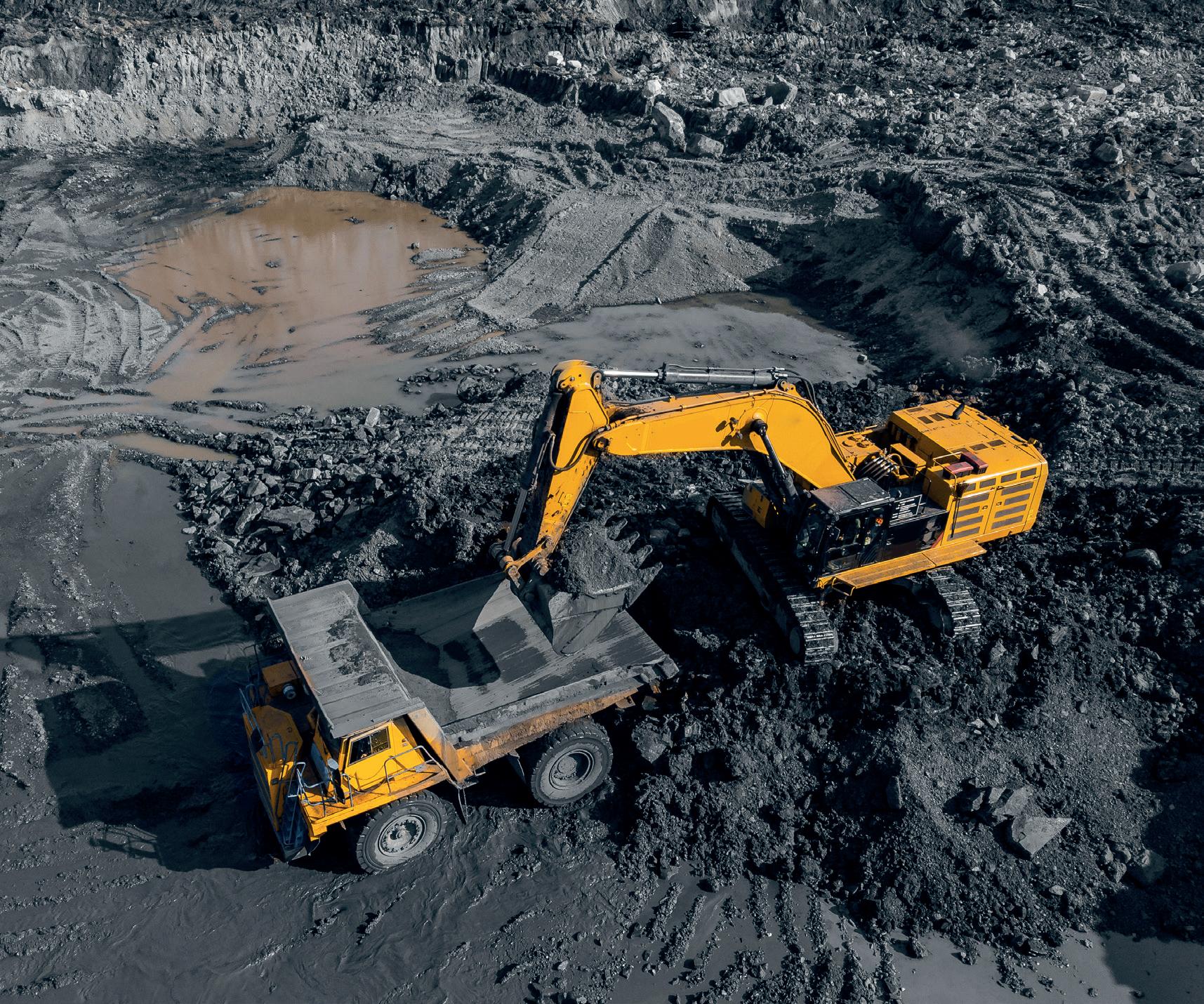
As a result, SLACC, which aims to address the twin issues of climate change and peak oil, have now taken matters into their own hands. Acting fast, the charity launched a crowdfunding campaign through the CrowdJustice platform on 8th December 2022, just one day after planning permission was granted, with an overall goal of raising £70,000 to
pointing to the government’s own admission that CO2 equivalent fumes will be released into the atmosphere.
Arguments against the mine rightly spotlight impact further down the supply chain. A recent study, led by Japan’s National Institute for Environmental Studies, found steel is responsible for around 7% of overall global emissions. There are hopes for a 46% reduction this decade, with the UK treasury alone committed to £600m of investment to help the last two British-based steelmakers reliant
Mason tells us the ongoing Finch Vs Surrey County Council case, dating back to 2019, has similar elements. The claimant, Sarah Finch, has brought a claim against the authority for granting permission to build four crude oil wells which will directly contribute to greenhouse gas emissions. In this instance, the planning team neglected to consider the impact burning oil would have on the environment, echoing the government’s lack of acknowledgement that using the Cumbrian coal will have a significant knock-on effect.
The hard work SLACC have devoted to raising awareness around this situation has been nothing short of exceptional. Setting an initial target of £10,000 to help cover the legal costs, they have now brought in more than £30,000 and hope to hit £70,000 in the near future. These funds will be used to hire lawyers and offer some protection should the charity lose its case and be liable for further costs.
‘We are asking courts to agree what the top limit will be. There’s something called an Aarhus Cap on environmental cases, which states if you’re alone in submitting your case, then there’s a cap of £5,000, but if you’re an organization, parties can claim £10,000’ Mason says, before making it clear, audible concern in her voice, that despite such rules being in place to financially safeguard those trying to take on large organisations, SLACC are expecting ‘the other side to try and push the caps up’.
cover legal costs. On 13th January 2023, SLACC filed papers at the High Court in Manchester, formally beginning the challenge.
Mason is quick to explain there were four points presented in the claim, with an overarching focus on what can only be described as government hypocrisy in the form of its assertion that emissions will be ‘eco-friendly'. Something of an oxymoron, that claim is despite official reports confirming the new mine will have a significant impact on our atmosphere. ‘Clearly the planning inspector and Secretary of State came to the conclusion that this would be climate neutral or slightly beneficial,’ says Mason, before
on high polluting cooking coal to start producing emissions-free.
One of those firms, the Indianowned Tata Steel, which runs the country’s largest steel plant, has already stated that figure is only enough to cover around 10% of the costs needed to convert to ‘greener’ processes. While most coal from the new mine will not be used domestically, that figure gives some idea as to the scale of challenge an entire sector faces in becoming more environmentally sound. Hence SLACC is claiming the UK government has failed to consider ‘downstream emissions’ associated with the Cumbrian development.
‘The response has been fantastic,’ Mason says of the awareness and fundraising campaign. ‘There’s been huge and very enthusiastic support from the public – you can see the comments on the CrowdJustice campaign page. They’re telling us to go for it, the trustees have considered it very carefully and had the lawyers in for a Q&A and decided that this is so important that they feel we need to go forward.’
SLACC have also spent around £200,000 on a Public Inquiry, which includes money raised directly from members. This shows not just how effective their efforts have been in winning favour and financial backing through the campaign — with Twitter leveraged to help spread the word and establish links with similar groups — but how invested the group themselves are to their cause. Whether this will be enough is unclear, in contrast the message to government is anything but.
Alphasense supplies high-quality gas and particulate sensors to many of the world’s leading industrial OEMs in the air quality, industrial and gas safety industries. With over 25 years’ experience in the design and manufacture of high-accuracy sensors, the Alphasense brand is synonymous with quality and innovation, particularly in the fields of gas detection, industrial gas analysis and environmental monitoring
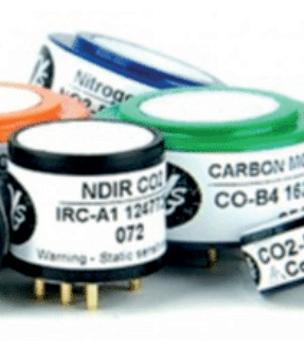
AQMesh is the proven small sensor outdoor air quality monitor manufactured in the UK by Environmental Instruments Ltd and supported worldwide through a global network of distributors. It has been designed to offer a robust and easy-to-use air quality monitoring system that can deliver localised real-time readings, improving the accuracy and scope of gathering air quality data in order to support initiatives to reduce air pollution and its risk to human health.
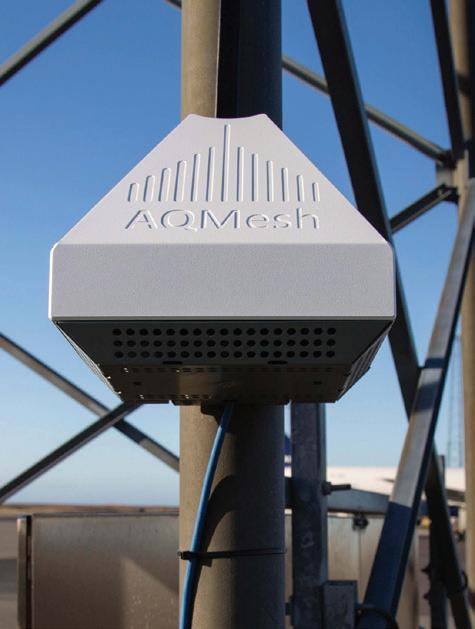
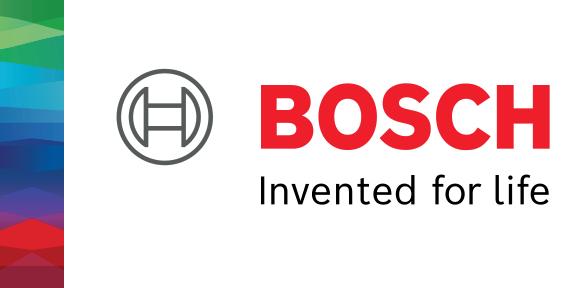
The Bosch air quality portfolio is focused on providing highly precise data with the expertise to improve the air quality around us. Offering a tool to local authorities to understand source emissions and model the implications on air quality. Highly beneficial for current advanced traffic management including assessing the effect on air quality for planned infrastructure projects. We measure pollutants using our Certified Air Quality Monitoring Box (AQMB) measuring Ambient Gases and Indicative PM (Optical Particle Counter) and track these pollutants independently or in combination with our Air Quality Software solutions; Environmentally Sensitive Traffic Management (ESTM) and Air Quality Dispersion Model (AQDM).
T: +44 (0) 1376 556700 https://www.alphasense.com/

T: +44 (0)1789 777703 www.aqmesh.com

E: Ian.Larbey@uk.bosch.com https://www.bosch-mobilitysolutions.com/en/solutions/airquality-solutions/air-qualitysolutions/
EarthSense is a leading air quality specialist, providing expert services in air pollution monitoring, modelling and data provision. EarthSense deliver innovative solutions, enabling the world to visualise and manage its air quality issues with the mantra: Measure. Model. Act. Offering a complete data solution to air pollution from inception to implementation, EarthSense’s modelling and monitoring products highlight a reputation for technical excellence in air quality services in the UK and abroad. Products include the Zephyr air quality monitor and versatile modelling programme MappAir, carefully validated against the government standard Automatic Urban and Rural Network (AURN) for gaseous pollutants including Nitrogen Dioxide, Ozone and Particulate Matter.
T: 0116 296 7460
www.earthsense.co.uk
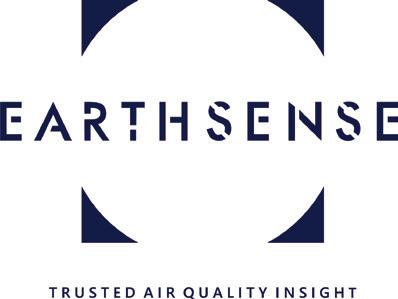
Compelled by worsening levels of air pollution in the UK, Evotech launched its specialist air quality division to help customers create safer working environments and is currently supporting clients to improve confidence in returning to the workplace during and after the pandemic.


We help UK businesses and organisations create healthier and safer working environments by monitoring and transforming their indoor air quality.

At Marston Holdings we understand the current challenges our local authority clients are facing whether they be social, economic or environmental.

We work collaboratively with our 500+ clients in the UK and EU to develop, refine and execute a wide range of end to end transport and enforcement solutions to meet their local and combined air quality and environmental targets and objectives.

We provide complete design, build and enforce services for clean air zones and low emission zones and are working with many cities and regions on their bespoke solutions.
Vortex IoT offers a suite of cleantech air quality monitoring solutions that help organisations deliver greater environmental impact at an affordable price. Vortex IoT SalixAir sensors and our ultra-low mesh network help drive down carbon footprint by removing the need to visit the device location for any maintenance or servicing needs. The result is that organisations can say goodbye to time consuming maintenance schedules as the sensors are managed remotely, lowering the cost of ownership and further supporting carbon reduction. In addition, we increase environmental impact by planting a tree with each device sold.
T: +44 (0)1792 73205
E: info@vortexiot.com

Our cities are getting bigger and more complex. We want to make mobility safer, more efficient, and more sustainable with forward-looking infrastructure and transport solutions. Yunex Traffic develops innovative mobility ecosystems and services for the smart city.

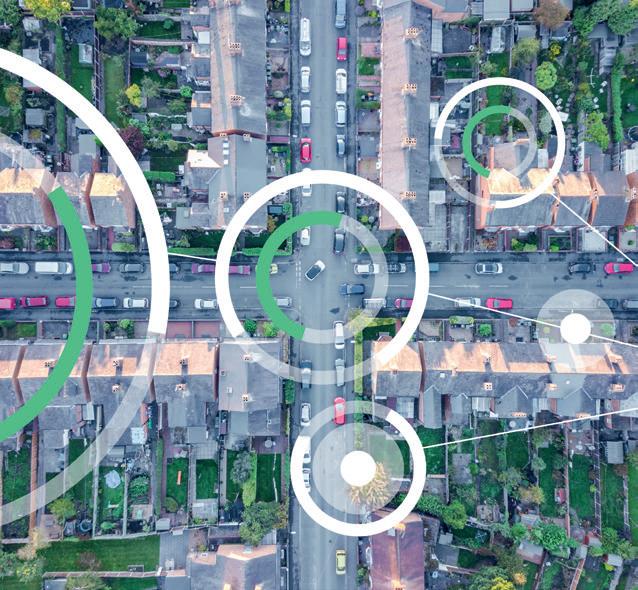
This combines freedom of movement with limited space; autonomy with safety; climate targets with value creation; quality
T: 0333 207 4245 www.evotechairquality.co.uk/
W: https://vortexiot.com/

Whatever your air quality or transport decarbonisation plans, Marston Holdings can help at every step with market leading solutions incorporating:
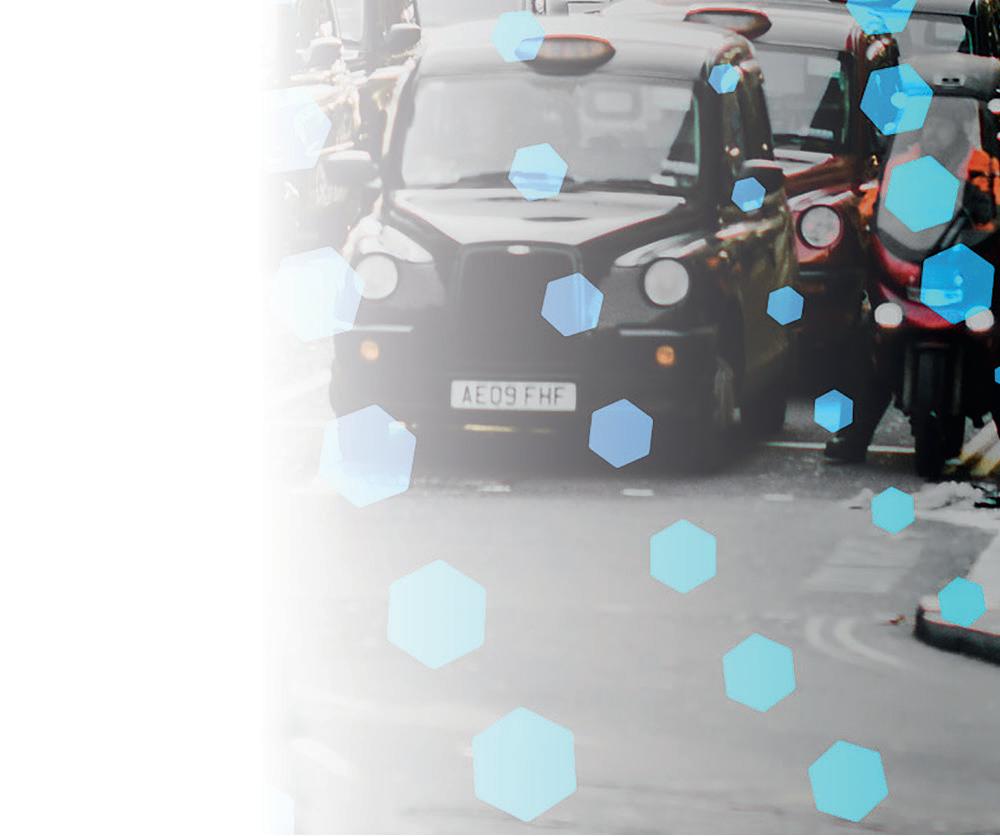
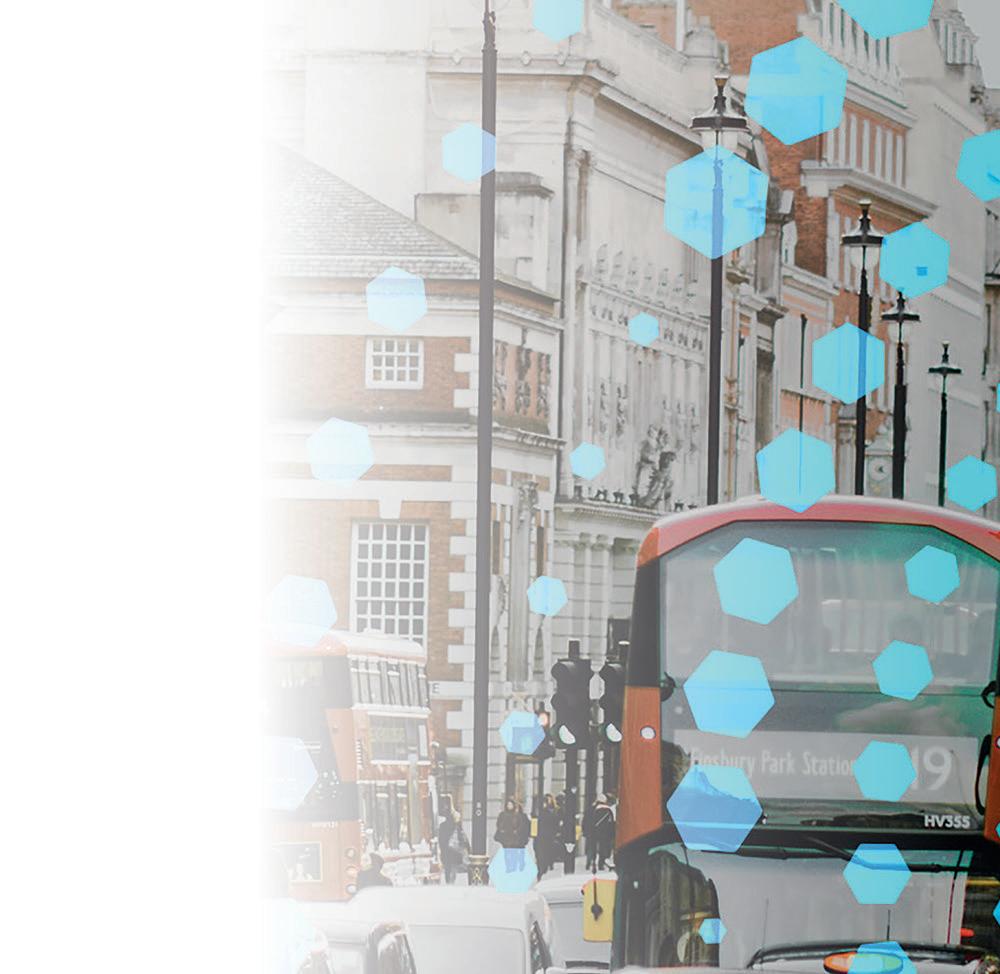
Hyperlocal AQ data monitoring and visualisation

Design and planning of AQ interventions
Technology solutions to support AQ schemes
On street and digital enforcement services
We provide unrivalled services for local authorities to achieve long-term air quality improvements.
Speak to a member of the team to find out more.
Combining the very best for a brighter, cleaner future! www.marstonholdings.co.uk/airquality
airquality@marstonholdings.co.uk